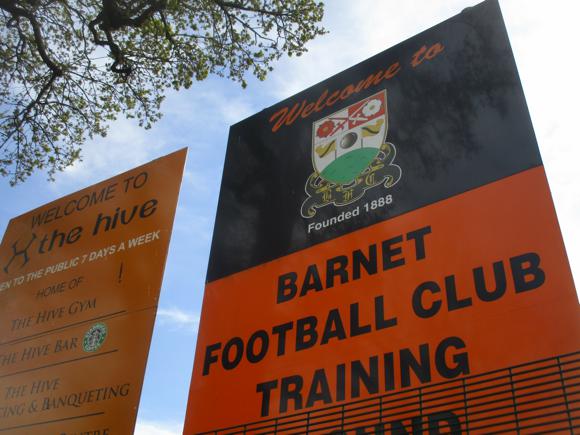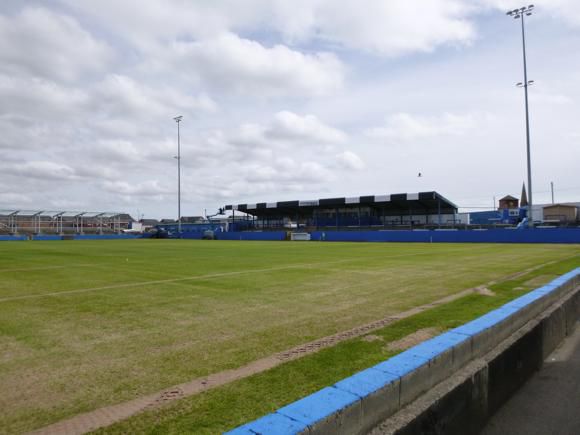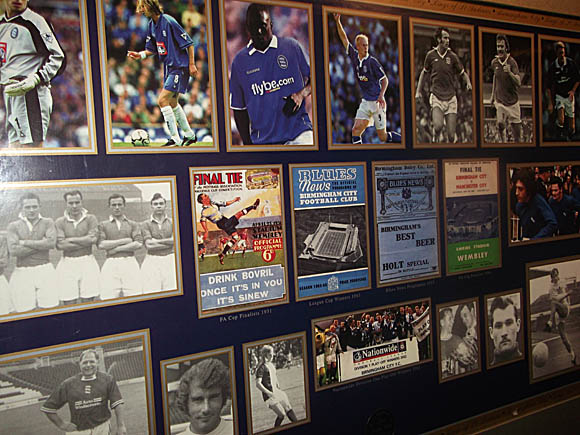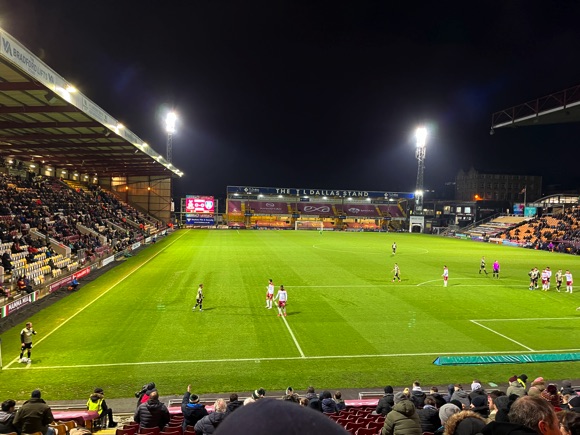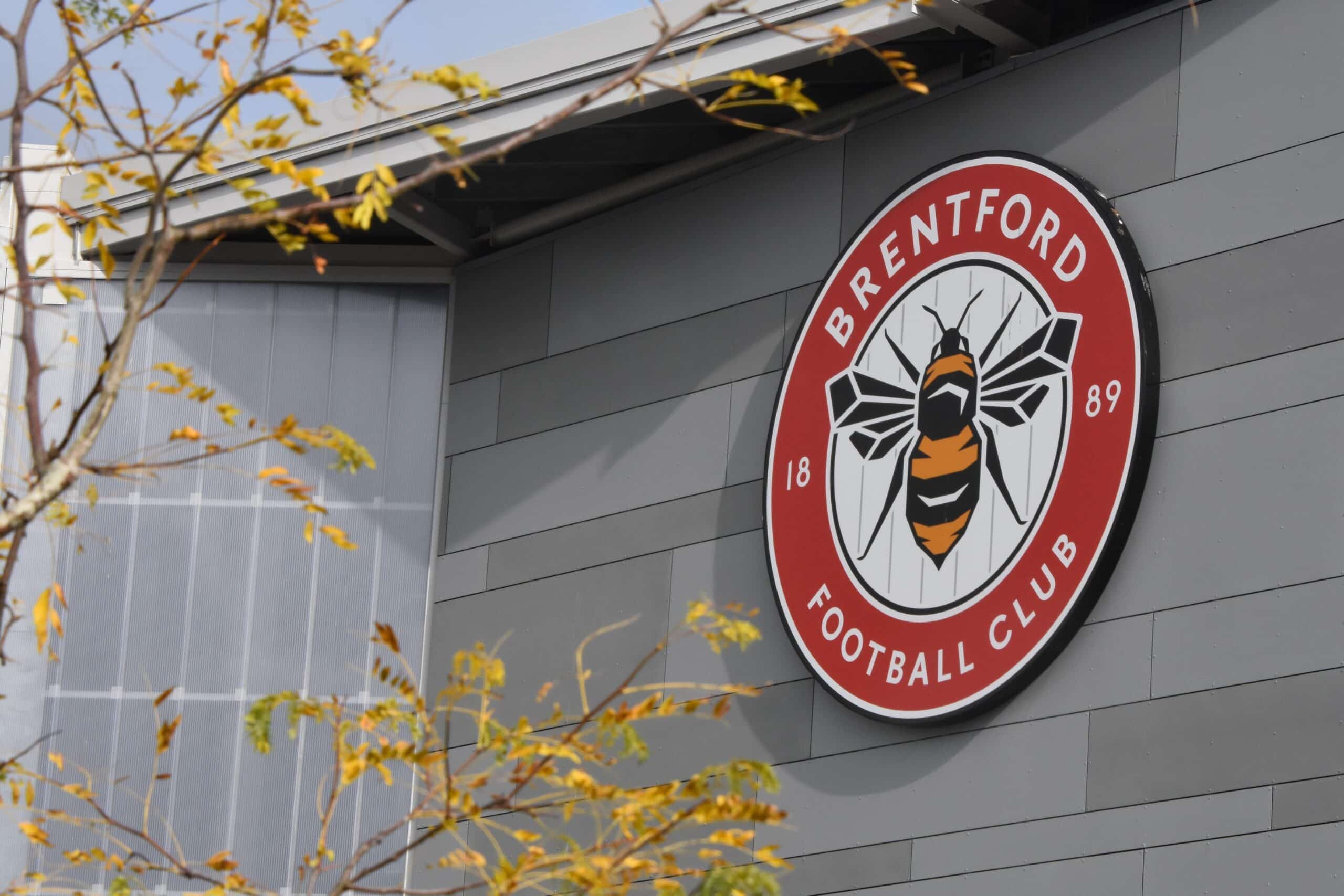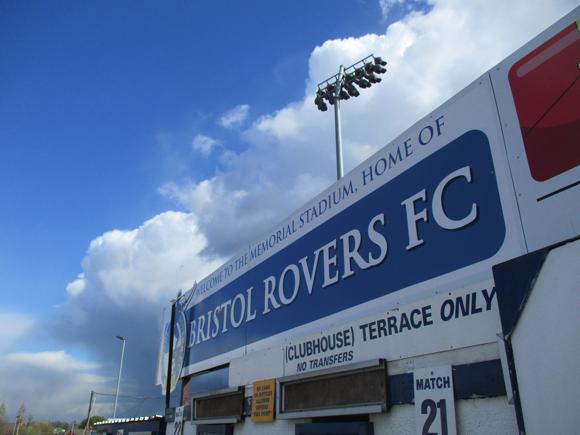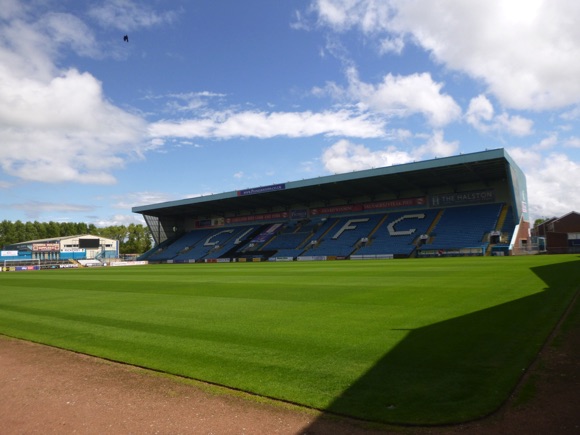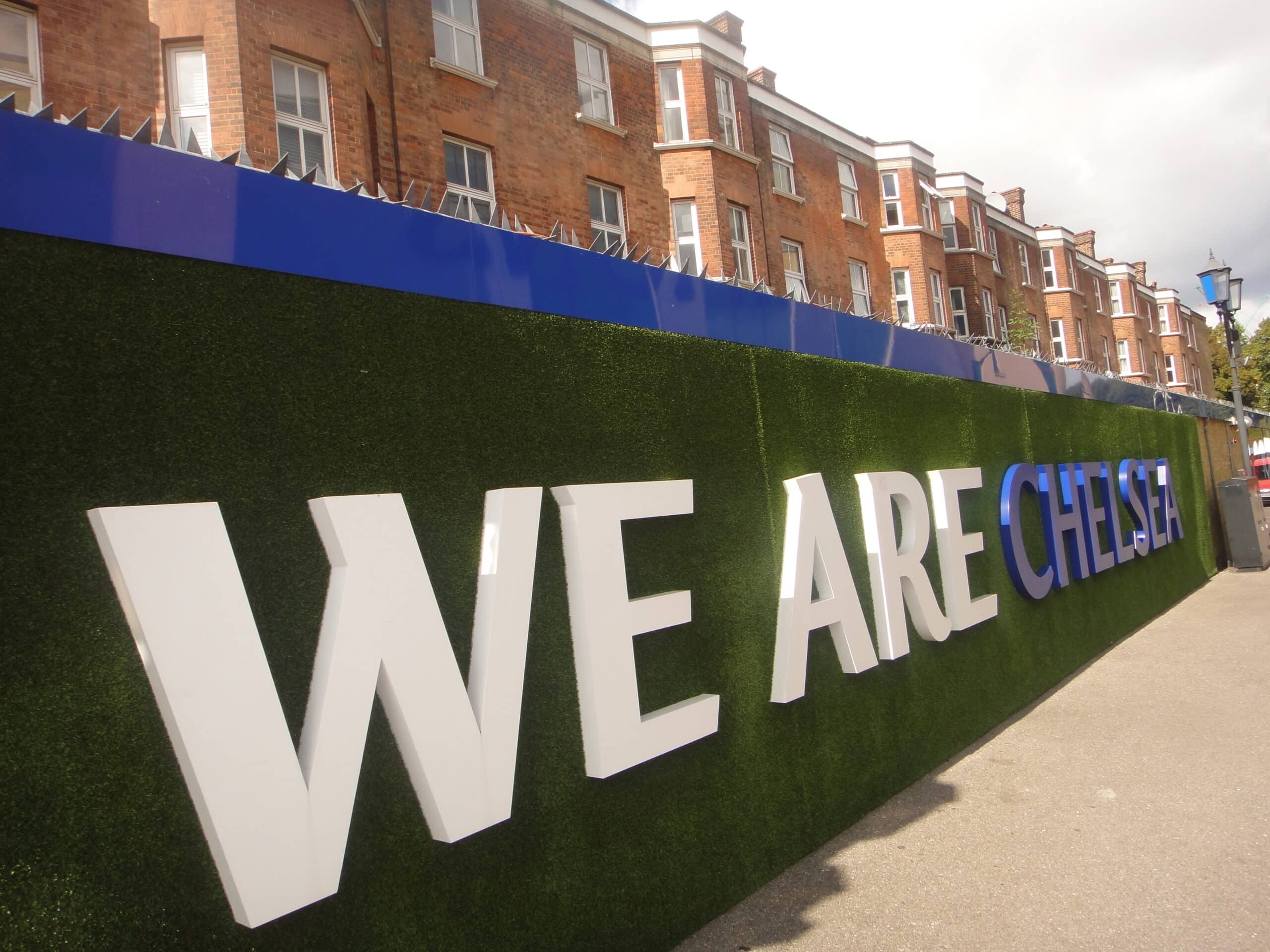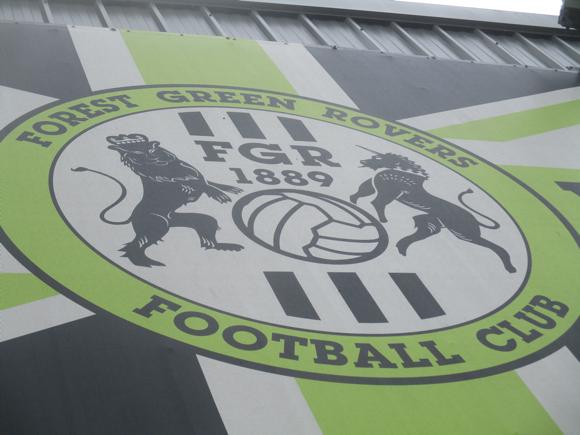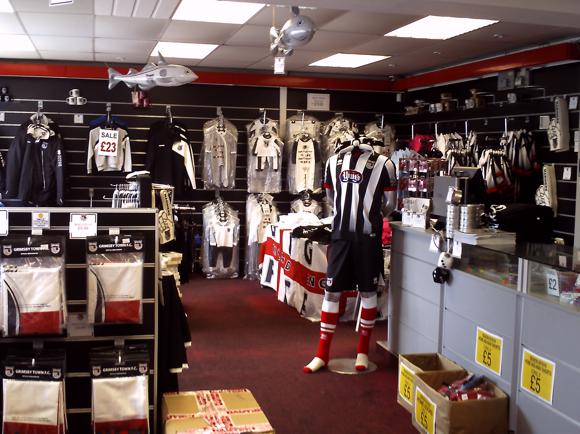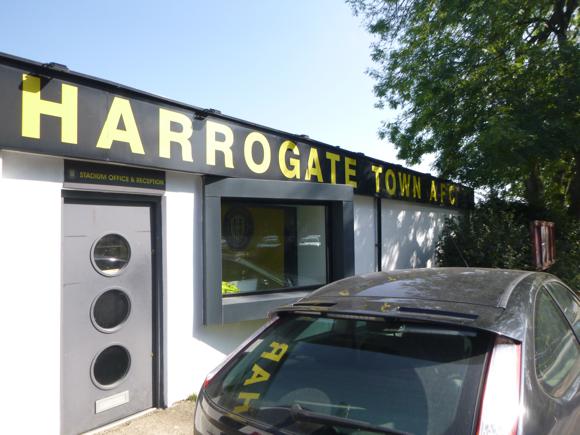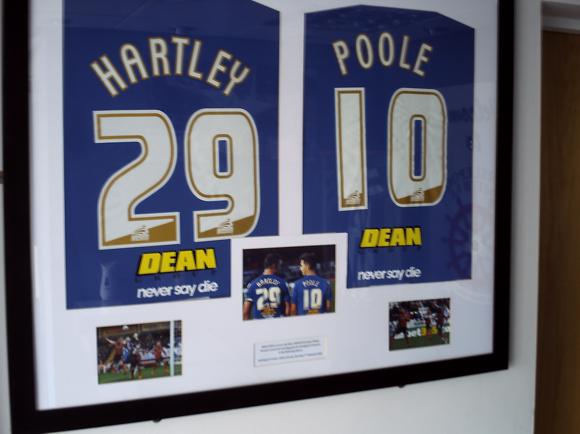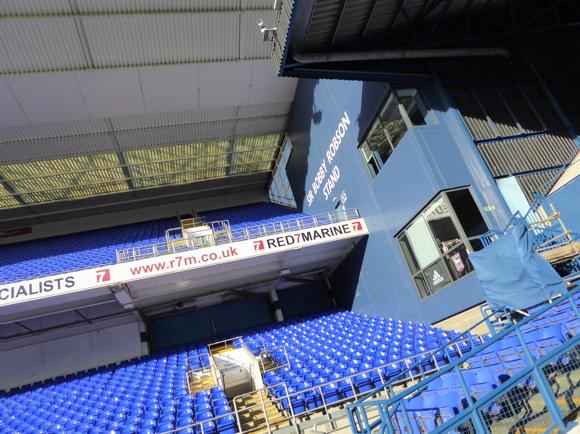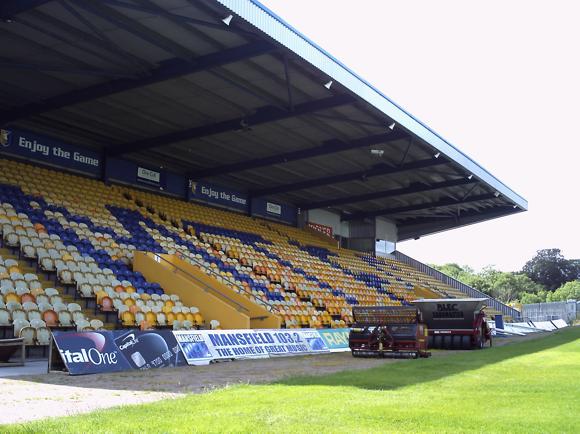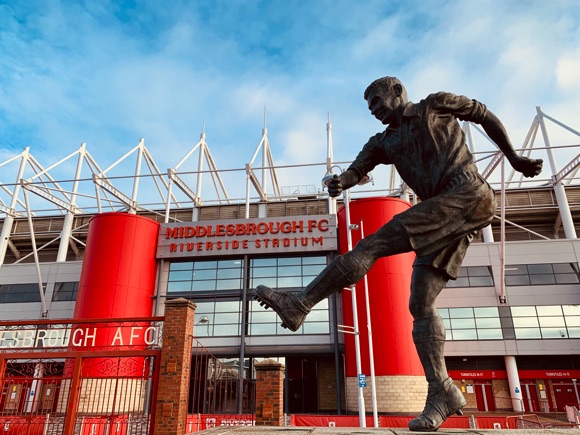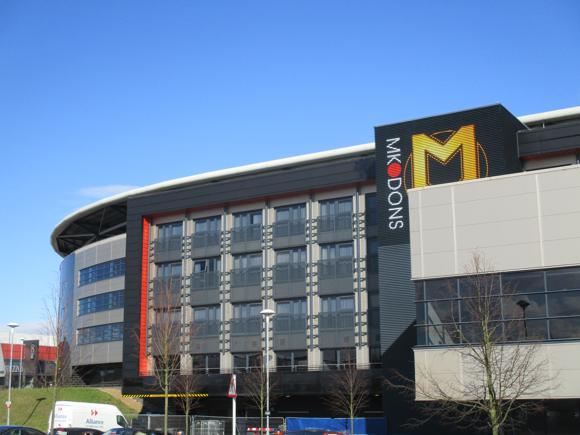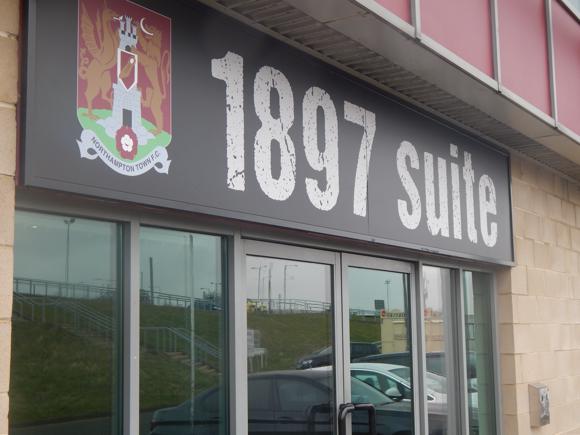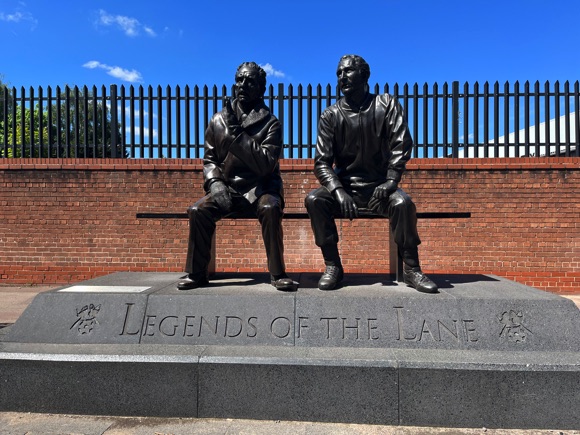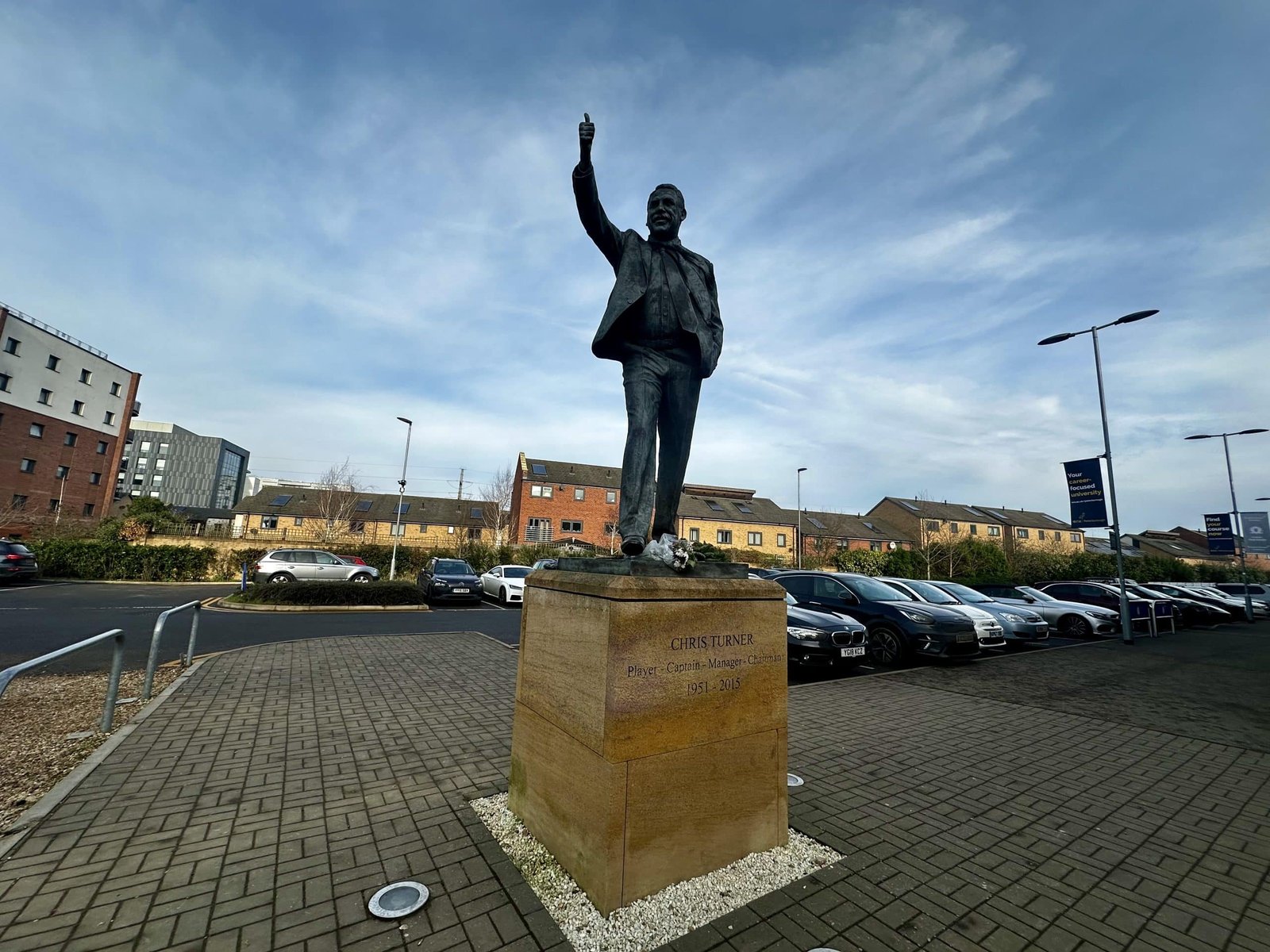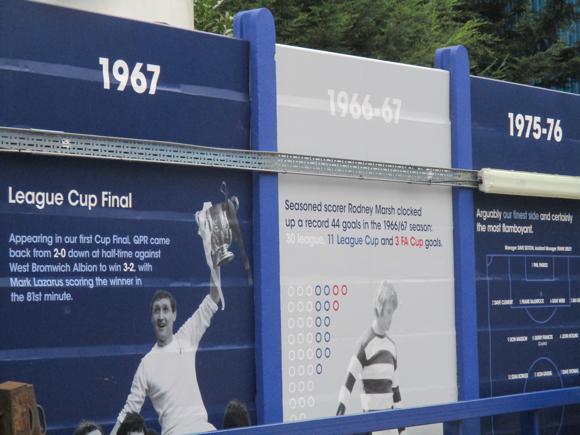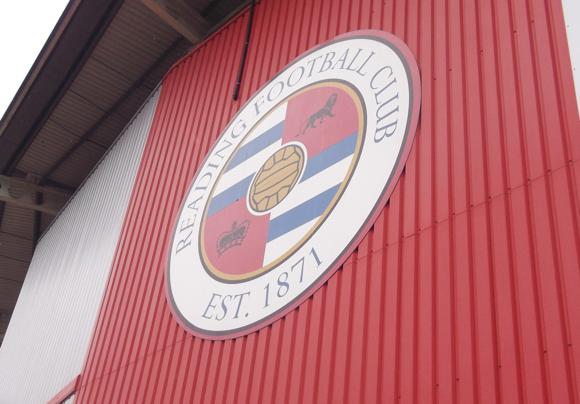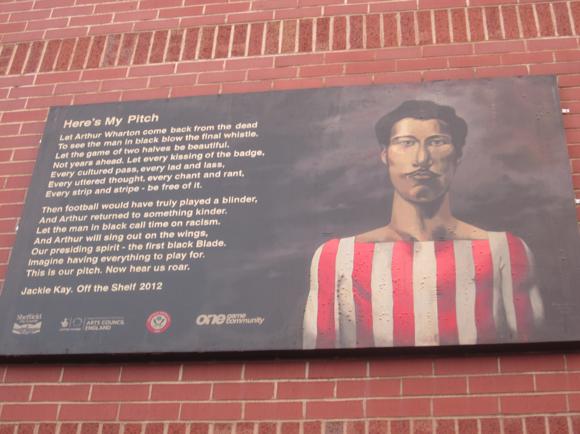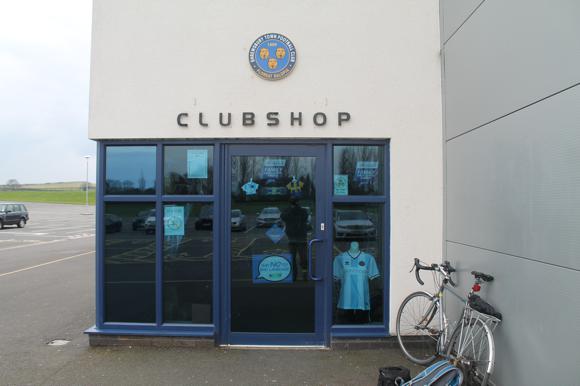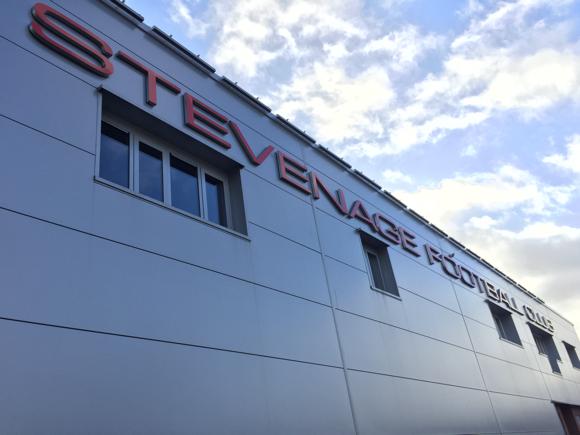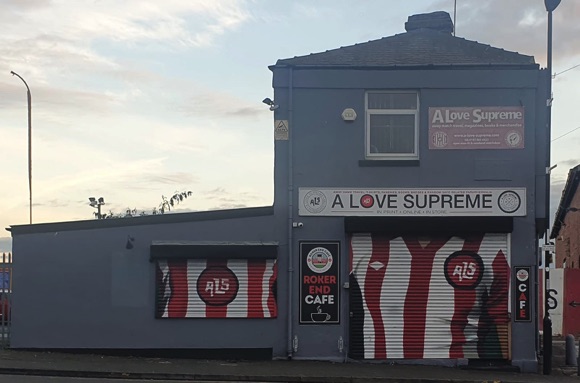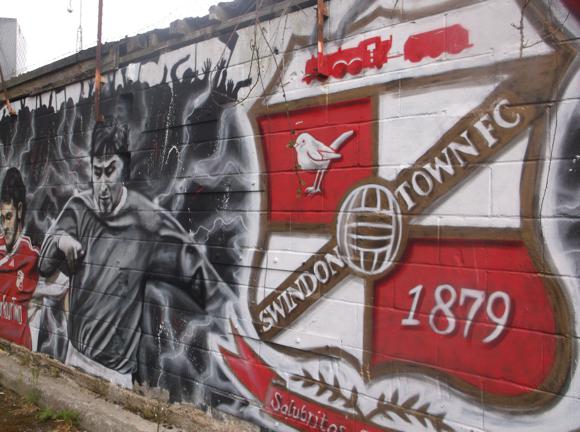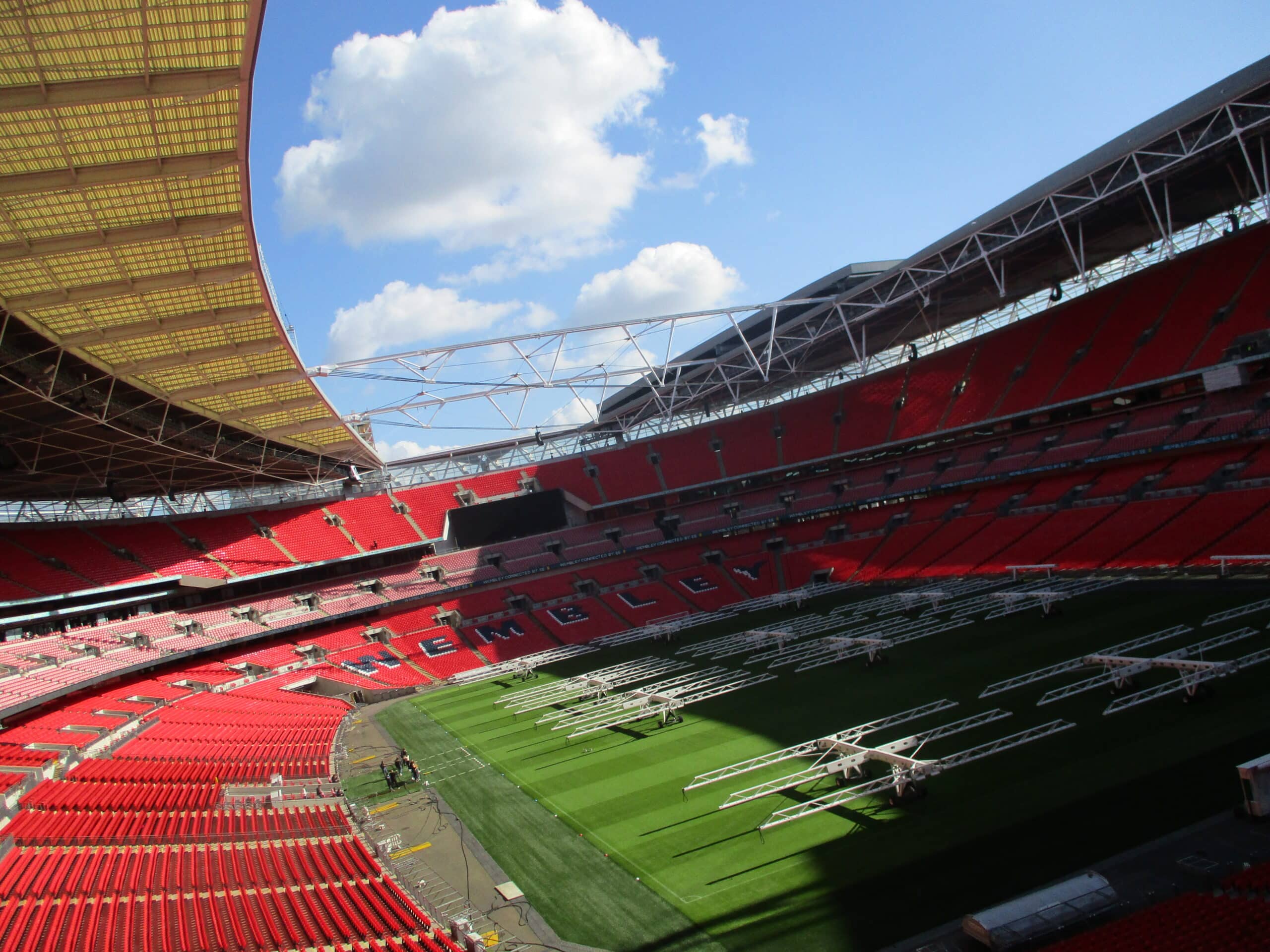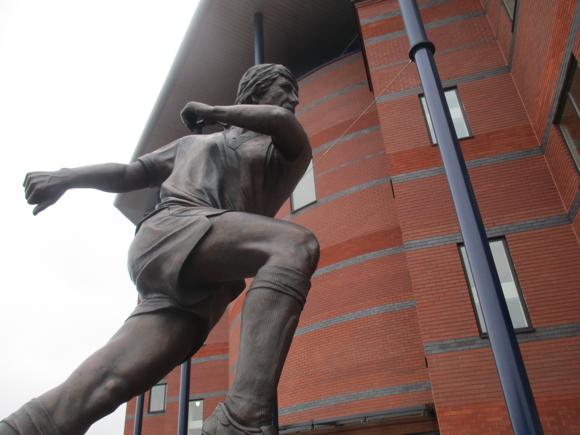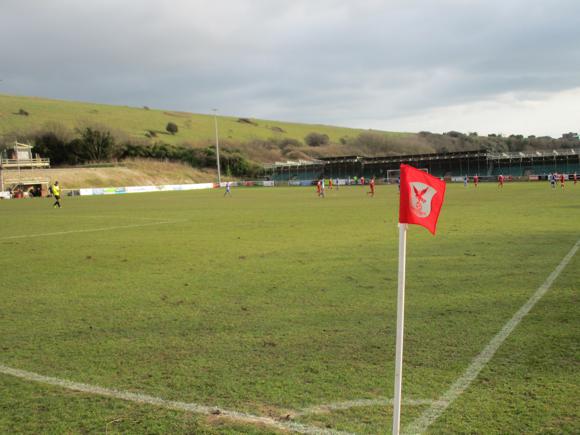A fan’s guide – the club from early doors to today
When the cash tills rang up to the tune of £305 million at Newcastle United one crazy day in October 2021, fans descended on St James’ Park to celebrate. Some wearing the makeshift ghutra headgear of the Gulf, they were reacting en masse to the news that the Premier League had allowed the Saudi-backed Public Investment Fund – in reality, the state itself – to buy the club.
Like state-backed Manchester City and Paris Saint-Germain, Newcastle were awash with cash. But while City and PSG were ratcheting up league titles, NUFC sat at the bottom of the table, a third of the way through a season even more dismal than so many mediocre campaigns under despised previous owner Mike Ashley.
Under respected manager Eddie Howe, Newcastle made swift progress to qualify for the Champions League in 2023, before lifting the Carabao Cup in 2025. The memorable Wembley victory brought out the whole city to celebrate Toon’s first domestic silverware in 70 years.
European qualification is now a given for 2025-26. The Champions League adventure of 2023-24 may have begun with a swashbuckling 4-1 win over PSG at St James’ Park, but it would prove to be the only one of Toon’s six-game campaign. With Swedish striker Alexander Isak and Brazilian midfielder Bruno Guimarães still very much involved, Newcastle will be looking to bring home a European trophy come 2026, nearly 60 years after the Fairs’ Cup triumph of 1969.
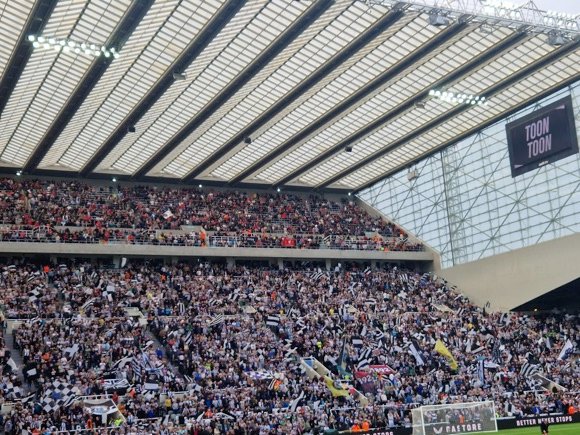
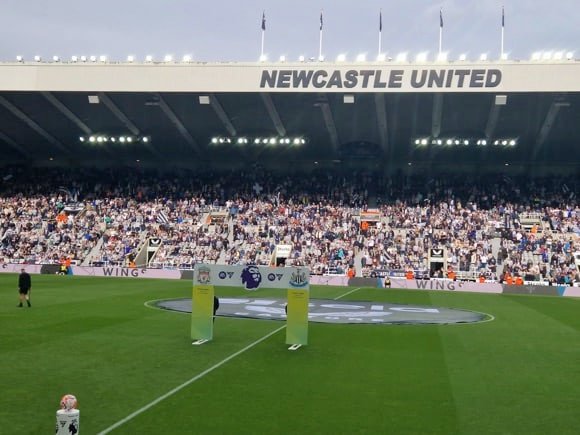
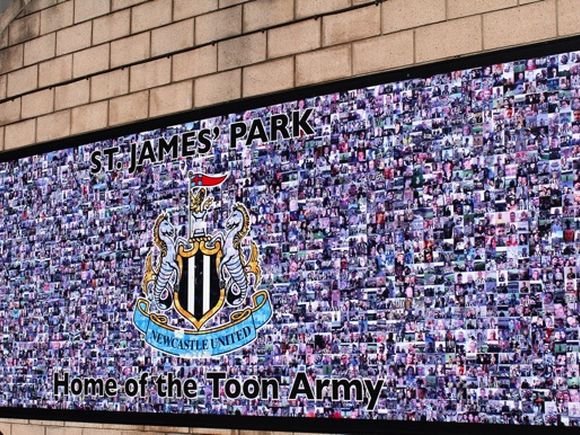
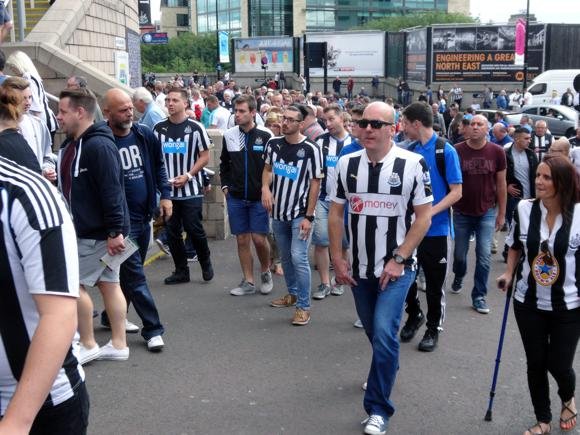
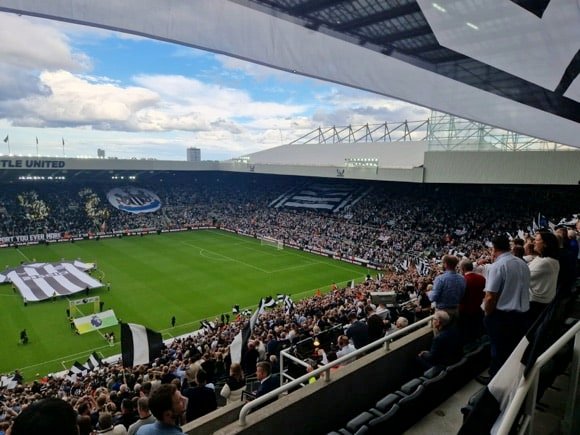
Behind the scenes, the club is still doing financial somersaults to avoid falling foul of the FFP rules to restrict extravagant spending at the expense of sustainability.
As the regulations apply to the previous three seasons, the latter, profitable years under the miserly Ashley can no longer feature on the balance sheet, meaning Howe has to offload squad members if he wishes to buy big – the draconian punishments handed out to Everton in 2024 have served as a warning to all.
Now there is even talk of a move away from the club’s sacred home of St James’ Park to increase long-term match-day revenue.
One of the cornerstones of English football, Newcastle must now match the size and passion of their fan base. The club’s previous purple patch either side of the new century saw a string of top-five finishes in the Premier League and promising European campaigns. The elite beckoned but the club lacked the management savvy and ambition to step up to the highest echelons of the domestic game.
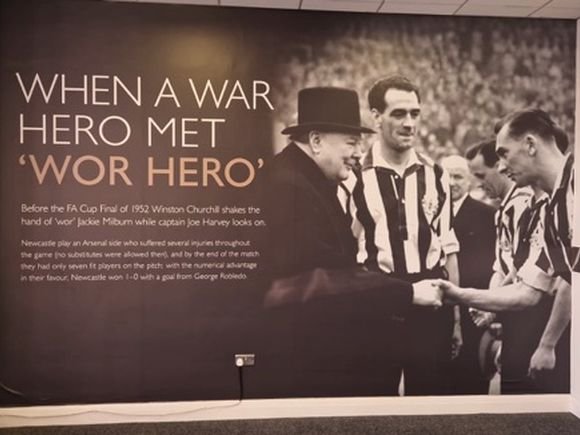
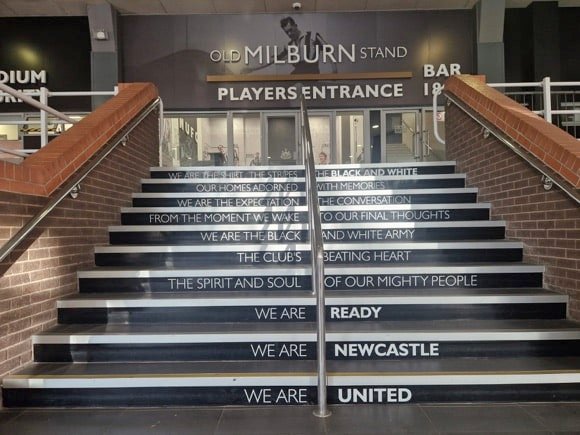
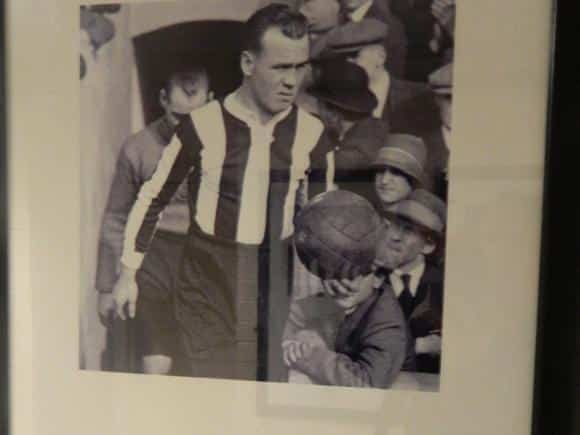

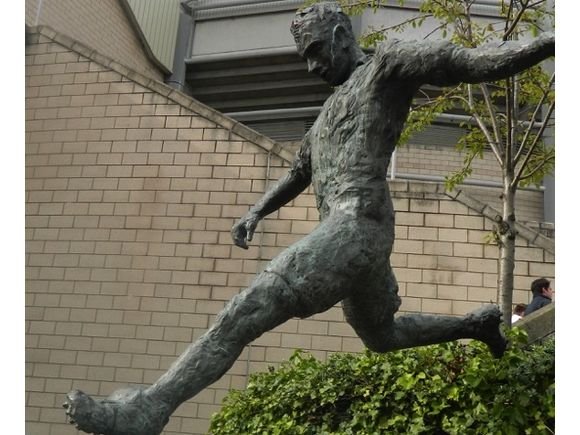
This is traditionally a club of iconic figureheads, starting with Colin Veitch, captain of the great side that won three early league titles, and nearly the double in 1905. Also co-founder of the People’s Theatre and a friend of George Bernard Shaw, Veitch played under manager/secretary Frank Watt. Watt also signed Newcastle’s next figurehead, his compatriot Hughie Gallacher, the pair both involved when Newcastle won the league for the last time, in 1927.
In his five years at Newcastle, captain Gallacher notched almost as many goals as games, also playing in the Scotland team of Wembley Wizards. Sold to Chelsea, Gallacher lost to his former club in the FA Cup semi-final of 1932. Depressed in later life, pining for his departed wife and the Tyneside of his glory years, he threw himself under a train in 1957.
Newcastle went on to lift the cup in the famous ‘over-the-line’ final of 1932, and claimed three more in the 1950s. Leading the line then was ‘Wor’ Jackie Milburn, whom Gallacher mentored during the 1940s. Ashington-born Milburn, a cousin of Bobby and Jackie Charlton, would make some 500 appearances for Newcastle. His statue now stands outside St James’ Park.
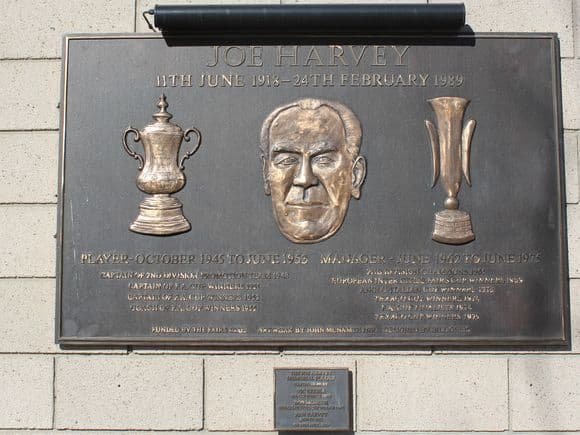
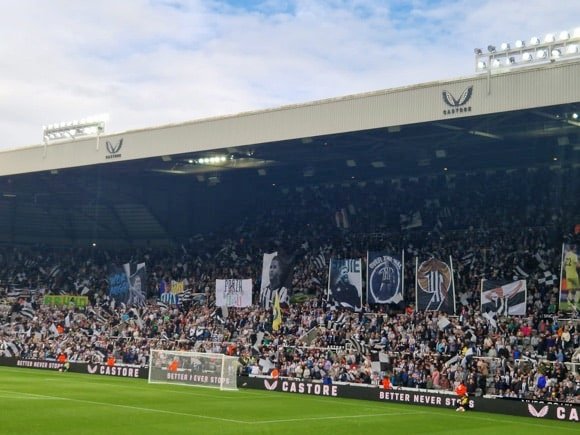
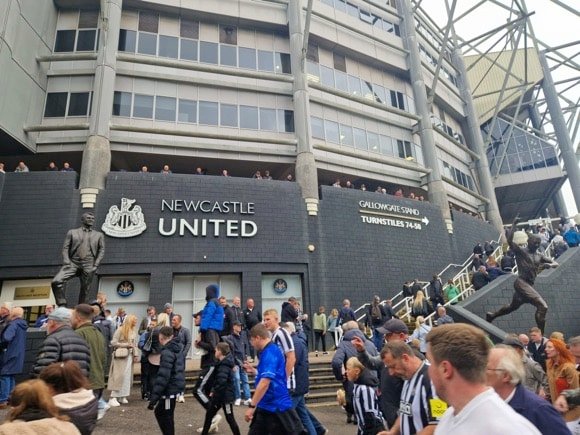
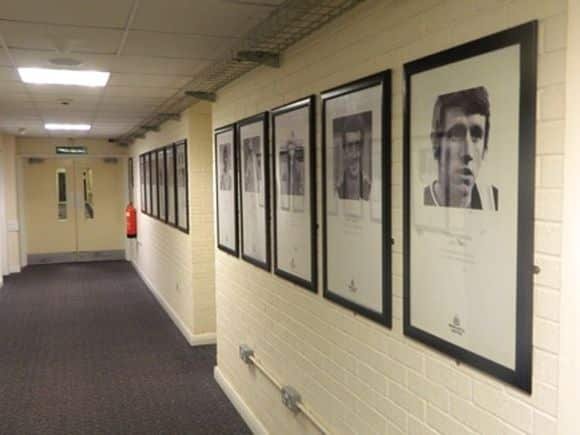
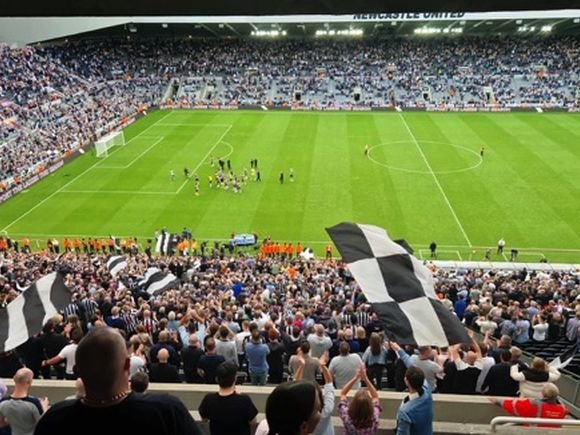
The mediocre post-Milburn era was dotted with brief highlights: the much-vaunted Fairs’ Cup win of 1969, in which captain and defender Bobby Moncur scored three against Újpest Dózsa; and goals by prolific centre-forward Malcolm Macdonald, who led Newcastle to the FA Cup final of 1974.
In 1984, a team starring the fervently popular Kevin Keegan, Peter Beardsley and Chris Waddle won promotion back to the top flight. Later relegated, Newcastle under new owner Sir John Hall welcomed Keegan back as manager in 1992.
Keegan assumed Messiah status as Newcastle rescaled the heights, mall-mogul Hall transforming the club’s finances. With Andy Cole, and later David Ginola, Les Ferdinand and Faustino Asprilla, Newcastle became a force in the new Premier League.
In 1996, they all but won the title, Keegan memorably losing his cool in the closing weeks. The failure of local rivals Middlesbrough to beat Manchester United on the last day helped send the trophy to Old Trafford.
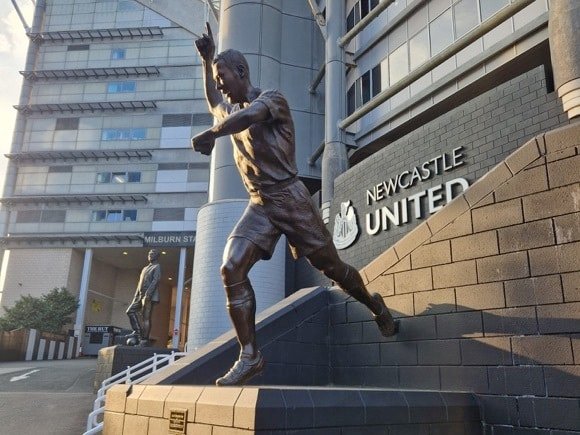


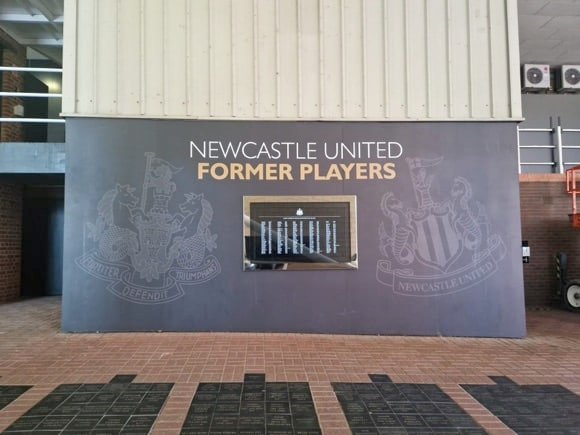

Top scorer that season was Blackburn’s Alan Shearer. In a then world-record £15-million deal, Keegan signed the locally born striker, who turned down Old Trafford to return to Tyneside. He went on to notch a club record 206 goals – six more than Milburn.
Despite missing out on the league in 1996 and the cup in consecutive finals, Newcastle enjoyed unforgettable nights of European football, even beating Barcelona. The early 2000s were a very good time to be a Newcastle supporter.
Boyhood fan Sir Bobby Robson worked near miracles to take the Magpies into the Champions League for two seasons running, the reliably prolific Shearer also top scorer in the UEFA Cup for two consecutive runs to the later rounds. It was Didier Drogba, however, who proved the supreme striker when Marseille overturned Newcastle 2-0 in the semi-final of 2004.
Shearer retired in 2006 after one injury too many. Hall was bought out by sportswear billionaire Mike Ashley in 2007. Two years later, last-ditch manager Shearer was unable to prevent Newcastle from relegation, though exile was short thanks to Chris Hughton, promoted from caretaker to permanent coach.
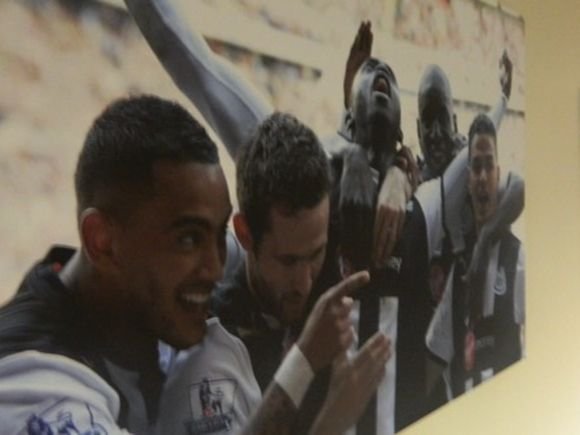
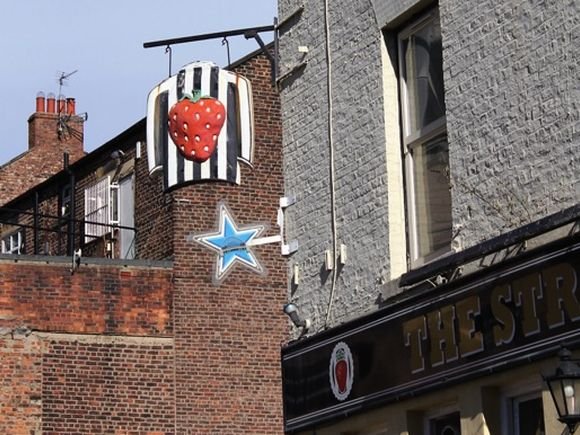
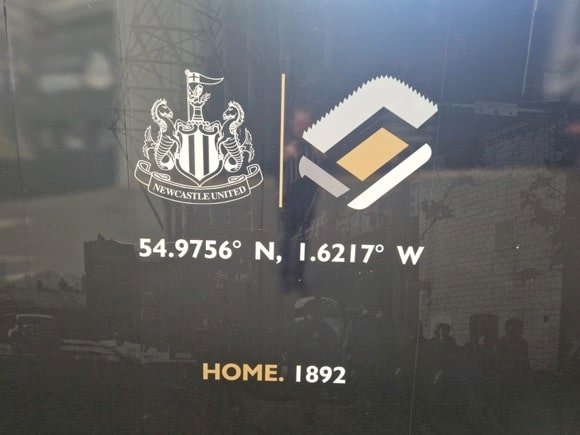


His sacking increased fans’ frustrations with Ashley, who then sold star striker Andy Carroll, another local boy, to Liverpool. Nevertheless, Ashley’s appointment of Alan Pardew proved astute. Newcastle finished a surprising fifth in 2012, returning to European competition.
Ashley continued to court controversy, trying to re-name the stadium, but spectacular goals from Demba Ba (later sold to Chelsea), Hatem Ben Arfa and Papiss Cissé appeased trophy-hungry fans – for a while. 2013-14 ended in farce, Pardew headbutting Hull’s David Meyler and earning himself a seven-match ban, while his team collapsed during a disastrous run of form. Vociferous abuse of Pardew and Ashley continued unabated.
United survived after a tense win on the very last day of the 2014-15 campaign. Steve McClaren then lasted until spring 2016 before Rafael Benítez was dragged in to save the ailing club from ignominious relegation.
With good performances from Andros Townsend in particular, Benítez gave it his best, the momentum continuing into the successful Championship-winning campaign of 2016-17. Former Crystal Palace striker Dwight Gayle had hit 20 goals by the January, his scoring role in the last-day win over Barnsley sealing the Championship trophy.
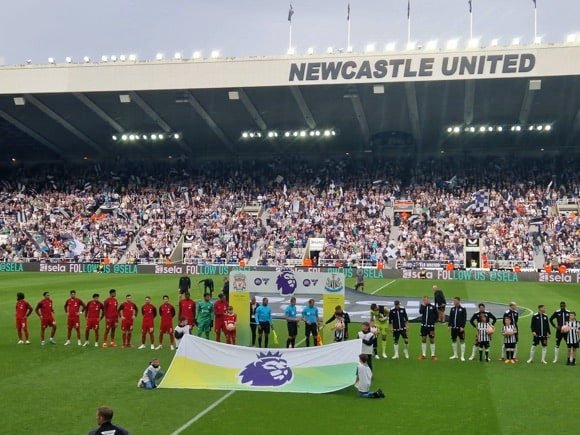
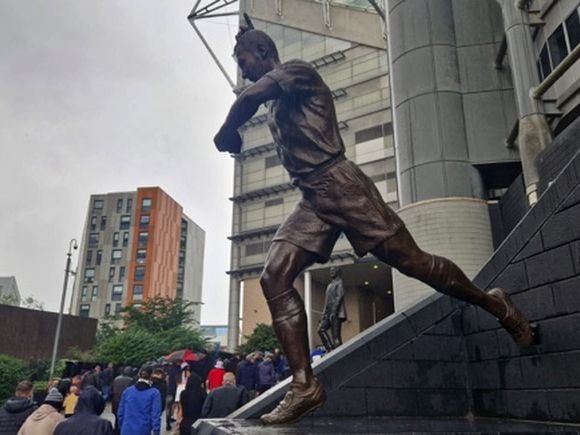
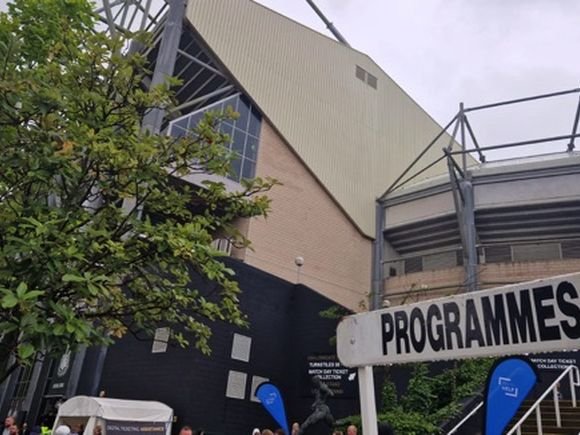
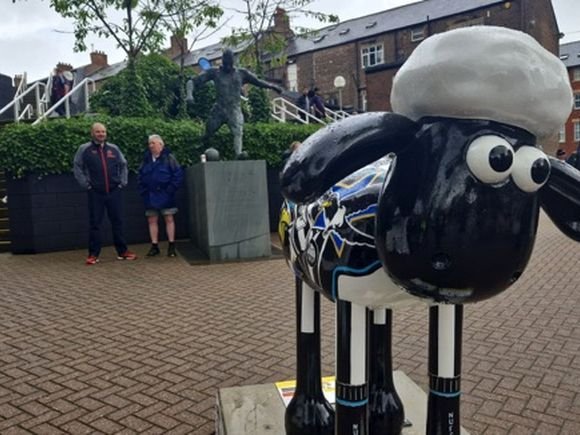
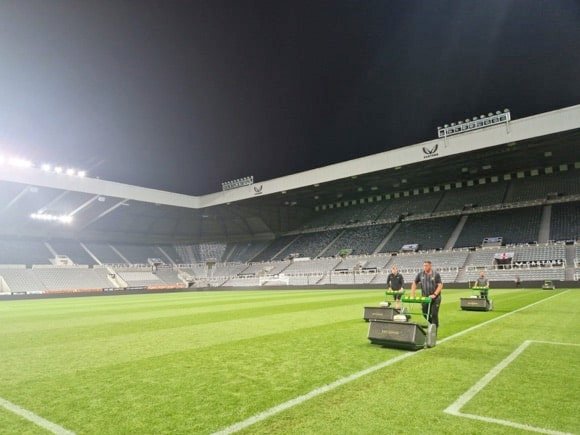
As Ashley’s sale of the club dragged on, Benítez managed to squeeze vital wins against fellow relegation candidates without setting the Premier League alight in 2017-18.
Newcastle under Steve Bruce duly failed to inspire, top scorers barely breaking into double figures for the season. The Magpies remained in the Premier League, however, no mean feat considering the chaos surrounding the club and its on-off-off sale to a Saudi consortium. The eventual takeover in October 2021 gave rise to wild celebrations around St James’ Park.
Granting the much-maligned Steve Bruce the dignity of notching his 1,000th game as a manager overseeing, for last time, the club he loved as a boy, the new owners brought in Eddie Howe. Successful on thin resources at Bournemouth, steady Eddie had been seen as a solid choice to keep Newcastle in the Premier League. Within weeks, Newcastle had been embarrassed at home by Cambridge United in the cup and could only point to one league win in 20 starts.
Incoming chairman, Saudi Public Ivestment Fund governor Yasir Al-Rumayyan, business executive Amanda Staveley and team manager Eddie Howe dug in and targeted Brazilian international Bruno Guimarães to bolster the midfield. The result was a nine-game unbeaten run in the league to a safe, mid-table spot, aided by England mainstay Kieran Trippier, an unhappy debutant in the Cambridge cup debacle.
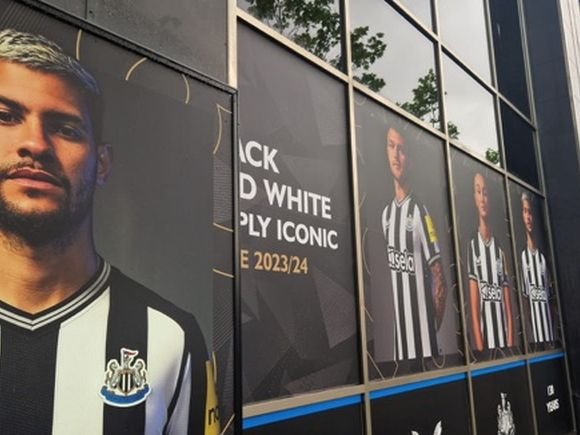
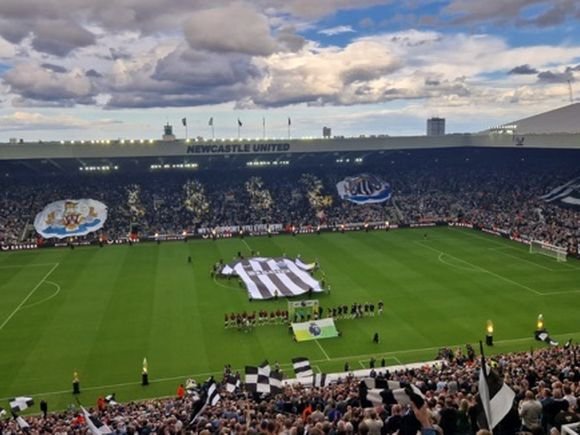
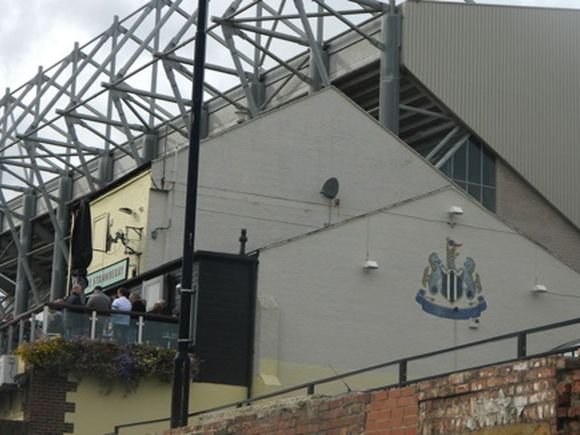

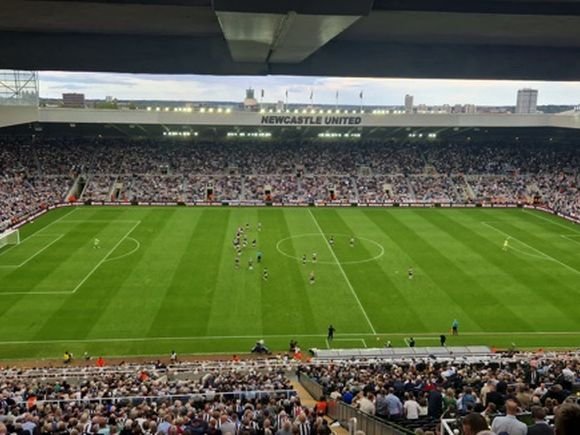
Newcastle upped the ante in the summer of 2022, splashing out on prolific Swede Alexander Isak from Real Sociedad and Dutch centre-back Sven Botman from Lille. Anthony Gordon then arrived from Everton in the winter transfer window. A 17-game unbeaten run stretching from September to February pushed the club into the top three, complemented by a run in the Carabao Cup.
Newcastle’s first major final this century attracted 100,000 to the capital but the occasion proved too much for the Magpies, who succumbed to Manchester United, 2-0. A fourth-place finish above Liverpool, however, sent Toon into the Champions League for the first time in a decade, encouraging the club to flash the chequebook once more pre-season.
In came young midfielder Sandro Tonali from Milan and winger Harvey Barnes from Leicester as Newcastle faced the challenge of a Champions League group against PSG, Milan and Borussia Dortmund. Shortly after his early goal in his league debut, Tonali strode out into his old home of the San Siro where he and his new teammates held firm in a hostile atmosphere.
Buoyed by the 0-0 scoreline in Milan, Howe’s men then tore into PSG at St James’ Park in a European occasion to match any since the Fairs’ Cup triumph of 1969. Mbappé, Dembelé and co could only look on as United roared into a 2-0 lead before half-time. The 4-1 scoreline had fans making plans for European travel in the spring.
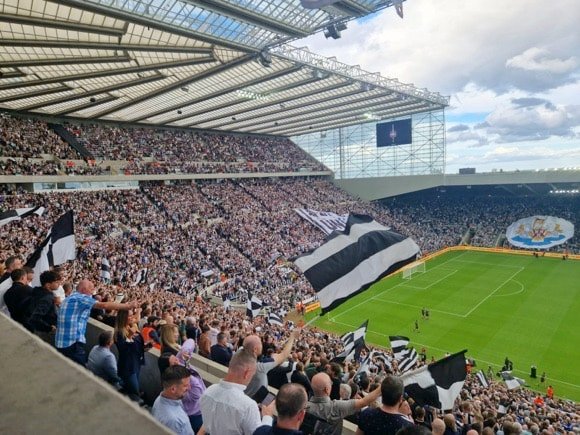
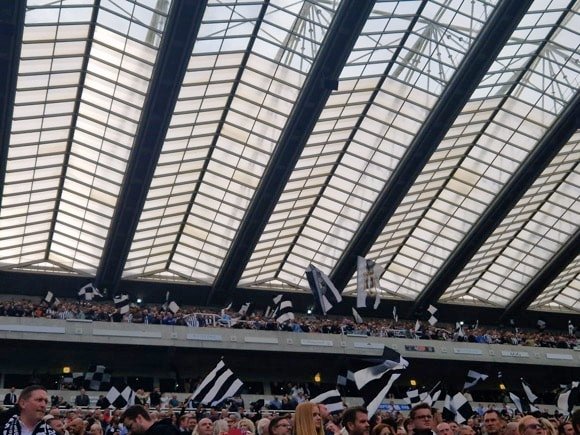

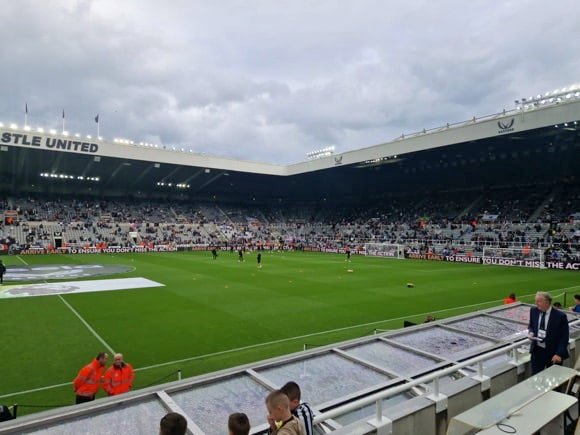
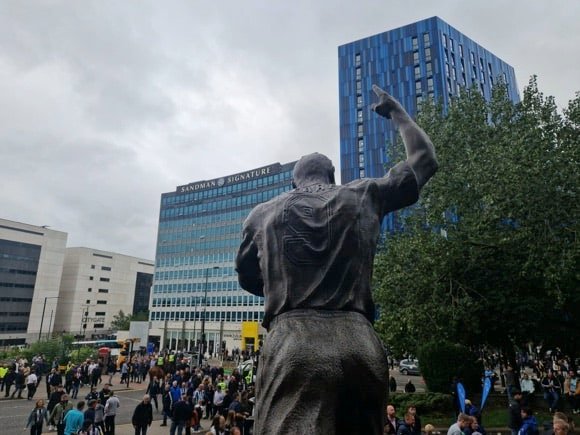
It wasn’t to be. A ban on Tonali – the most expensive Italian player of all time – for gambling offences put the midfielder out of action for the rest of the season. An injury to Harvey Barnes saw the winger sidelined for four months, his return coinciding with Botman’s long-term unavailability. High-scoring Newcastle finished above Manchester United in the league for the first time in nearly half a century, but the FA Cup going to Old Trafford barred Toon’s path to Europe.
Now aware of their spending limitations given the draconian punishment of Everton for breaching financial fair-play regulations, Newcastle dipped their toes in the transfer market before 2024-25 but by the January window, had offloaded key winger/midfielder Miguel Almirón back to Atlanta. Outstanding in Toon’s 4-1 win over PSG, the Paraguayan’s departure suggested a future in which Newcastle would forever be in the chasing pack behind England’s elite.
This mattered little when Newcastle twice outplayed Arsenal in the Carabao Cup semi-final of 2025 to sweep back to Wembley in triumph, the home second leg a gutsy performance in front of a raucous St James’ Park.
Better was to follow. Taking over the capital, let alone Wembley, Geordie fans were rewarded for their mass support with a convincing win over Liverpool, Newcastle claiming their first domestic silverware for 70 years. Man of the match was Blyth-born centre-back Dan Burn, whose thumping header on half-time opened the scoring and lifted the roof off Wembley Stadium. His heroic defending then allowed United to hold to their 2-0 lead, earning Burn a first cap days later at the age of 32.
As talk turned to increasing match-day revenue to free up potential cash for the transfer treasure chest, behind the scenes the unthinkable was being considered: a move away to an even bigger stadium, possibly in Leazes Park next door.
Ground Guide
The field of dreams – and the story behind it
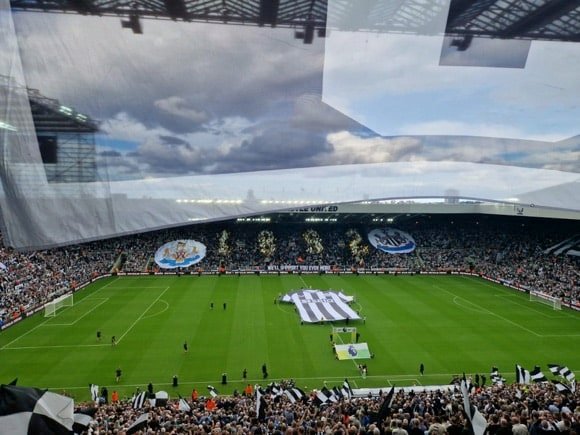
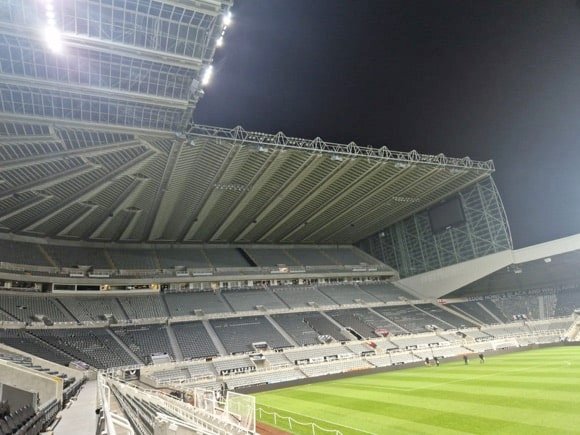
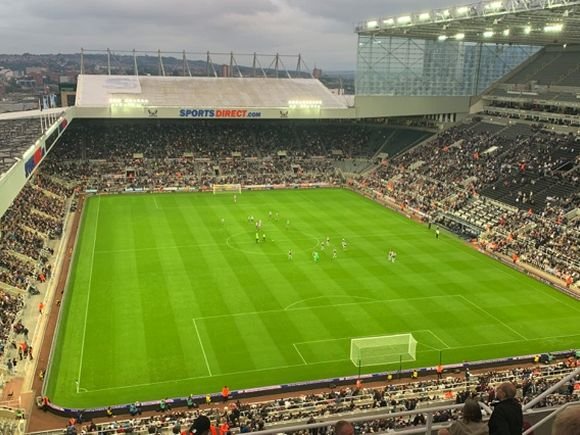
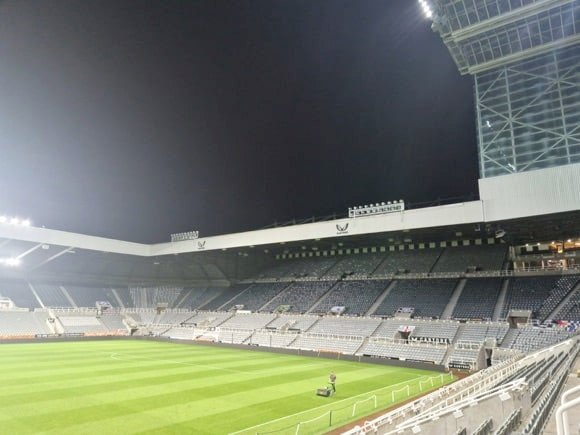

Football has been played on St James’ Park since the 1880s, when it was home to Newcastle West End. It became a more permanent fixture when West End and East End merged to found United in 1892. Capacity then was 30,000, huge for the time.
The failure to host World Cup games in 1966, the honour going to Sunderland, signalled the decline of a venue also subject to stringent redevelopment restrictions due to the proximity of local residents.
Sir John Hall changed all that. From 1992, the stadium was transformed, all four stands rebuilt and extended. The process was continued by his successor, Freddy Shepherd, which dovetailed with Newcastle’s cup runs to the final and appearances in Europe.
The capacity is now 52,300, with average home gates practically the same, way above Chelsea and Everton.


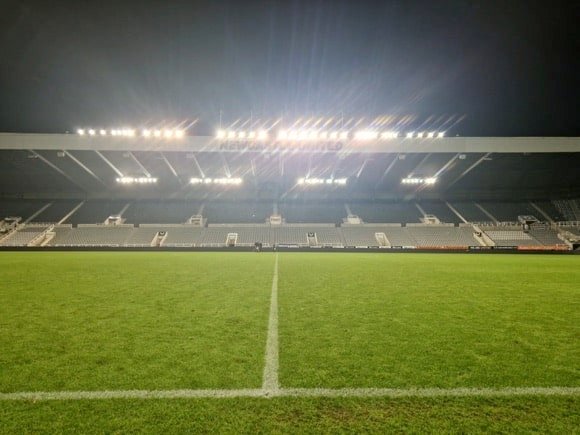
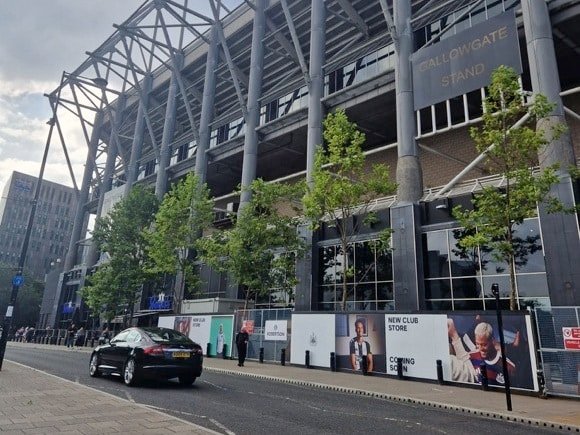
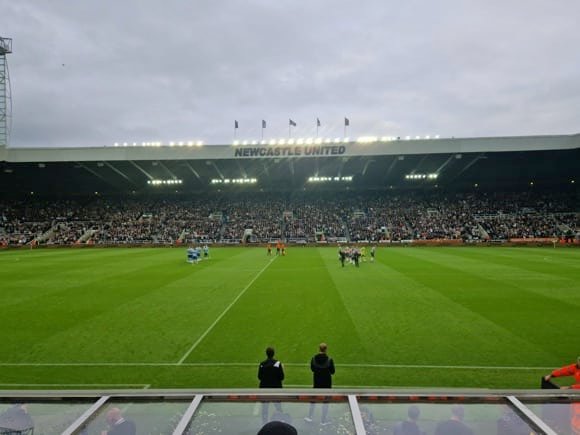
Away fans are high in the heavens – at level 7 of the Leazes Stand, 140 stairs and 14 landings up (there’s a lift), nearly half a kilometre from the far goal – so it’s not for vertigo sufferers. Access through turnstiles 89-94.
Opposite is the hallowed Gallowgate End, behind which you’ll find the Metro station and the STACK bar zone. The main three-tier Milburn Stand rises way above the East Stand opposite, always impressing first-time visitors, the asymmetrical look allowing for views of Newcastle cityscape.
The need to increase match-day revenue has focused attention on either expanding St James’ Park – in practical terms, this would probably mean adding a few thousand seats to the Gallowgate End – or building a new stadium. Mooted in the Keegan era, Leazes Park next door is one possible site, but would encounter considerable local opposition.
Another possibility is Town Moor alongside Jesmond, north of the city centre, at which point the question must be asked how badly club needs to spend an extra few million on transfers and salaries if relocation is the price?
getting here
Going to the ground – tips and timings



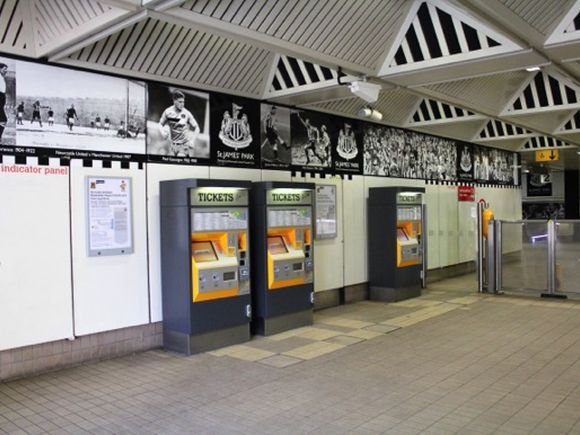
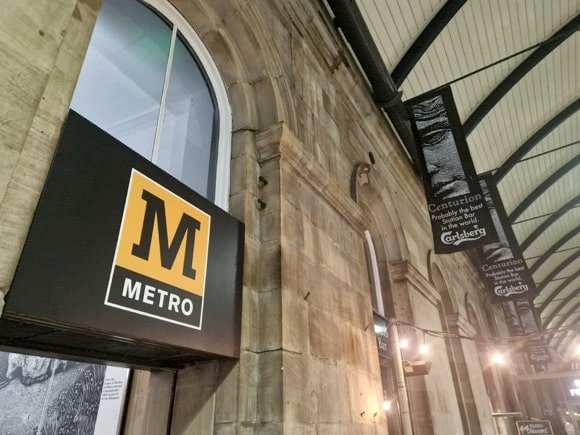
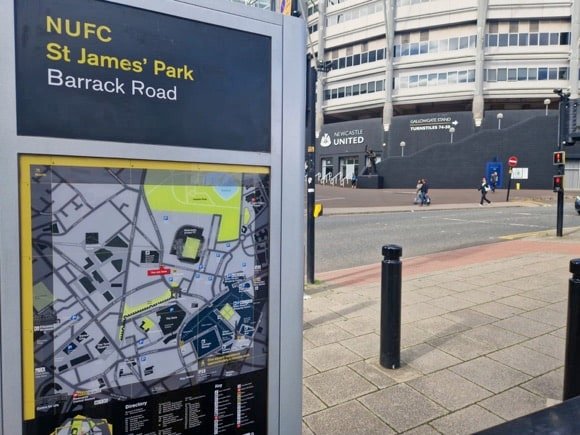
St James’ Park has its own Metro station behind the Gallowgate End, linked to Newcastle Airport with a change at Monument one stop away. Walking from Newcastle Central station should only take 15mins, turning left into Neville Street, then right up St James’ Boulevard.
The sat nav code for St James’ Park is NE1 4ST. Being so close to the city centre, parking options are many but places fill quickly. The stress-free option is the free parking at the vast Metrocentre mall (NE11 9YG) in Gateshead, from where P&R shuttle bus X50 (£1.50 single/£2 return, under-18s £1 single) makes regular runs to Barrack road behind the Milburn Stand from 2hrs before kick-off and up to 1hr after the final whistle.
The nearest pay-for car parks to St James’ at Eldon Garden (NE1 7RQI and adjoining Eldon Square (NE1 7RZ) now run on the Check In Check Out system, so that a larger amount is taken from your card in case you’re late back, and the difference released days later. The charge should be £5.70/3hrs at Eldon Garden, £8 daily charge (£3 Sun), and £2.10/hr at Eldon Square, £3 daily Sun. On the plus side, currently there’s no charge after 5pm Mon-Sat and 6pm Sun. Each is about a 5-10min walk from the stadium, along Morden Street.
getting in
Buying tickets – when, where, how and how much

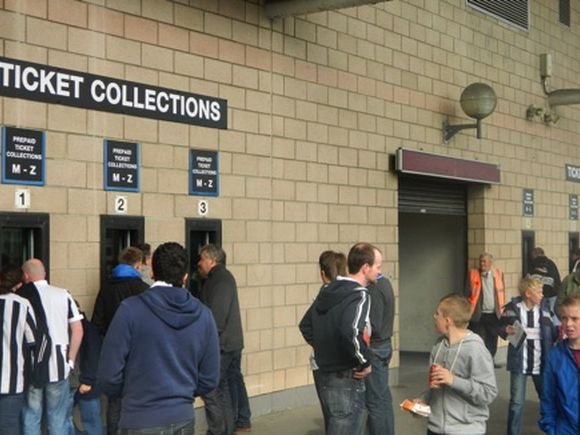
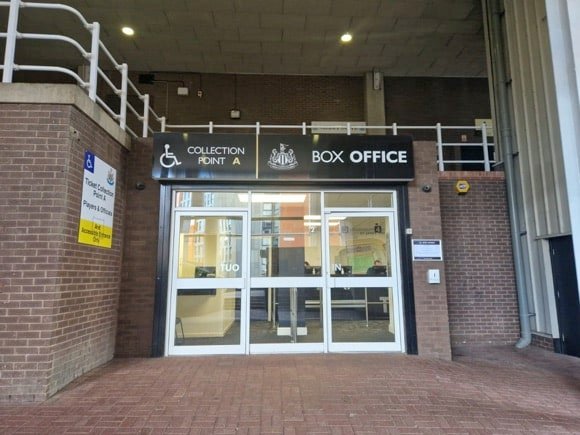
With an average gate at or very close to 52,300 capacity every home game, ticket are distributed through a members’ ballot, with a small percentage available for general sale. The only way to access either is through a Mags Membership (€18.50/junior £10).
As a general rule, the ballot opens around a month before each home game, at noon on a Monday. General sale is then offered a week later. The ballot stays open for 24 hours and successful applicants are notified the following day. Seat selection runs for 48 hours after lucky members have been informed.
Members can purchase tickets online for the next one or two home games. The club also operates a resale platform for season-ticket holders – for all enquiries, contact (UK only) 0344 372 1892 or email supporter.services@nufc.co.uk.
Prices start at around £25 for Category B games, £32 for Category A, rising to £55-£70. Over-65s pay around 10% less across the board, juniors around 60%. Away fans pay £30, over-65s £22, under-18s £16.
You can also book a hospitality package at one of several designated dining areas, including Shearer’s, the Club St James and the Park Grill Restaurant, each around £350-£400. The Barracks in the Milburn Stand is the cheapest at around half that price. Tickets sell out fast for all areas.
The ticket office (Mon-Fri 10am-5pm, match days) is under the Milburn Stand. to offer information and assistance.
what to buy
Shirts, kits, merchandise and gifts
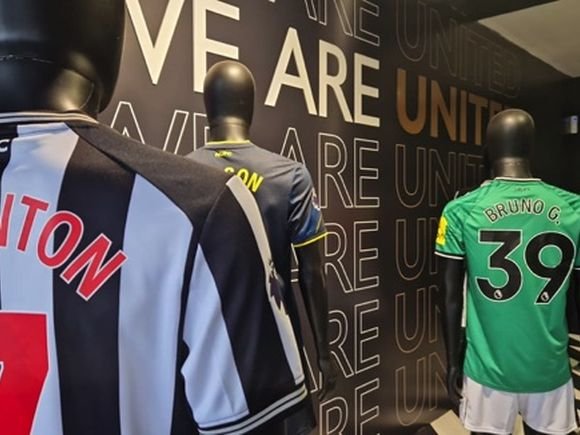
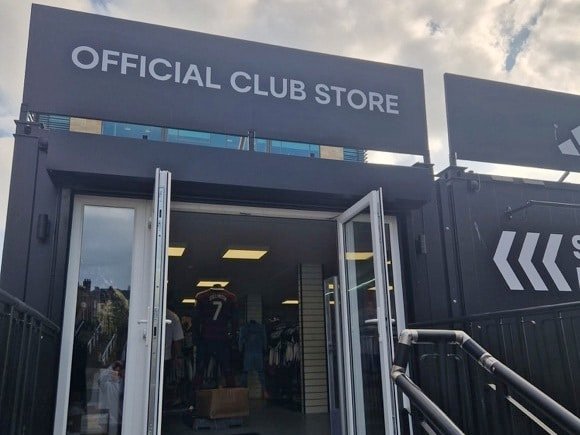

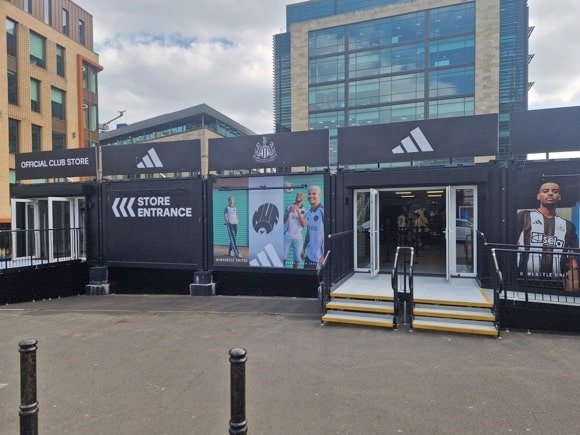
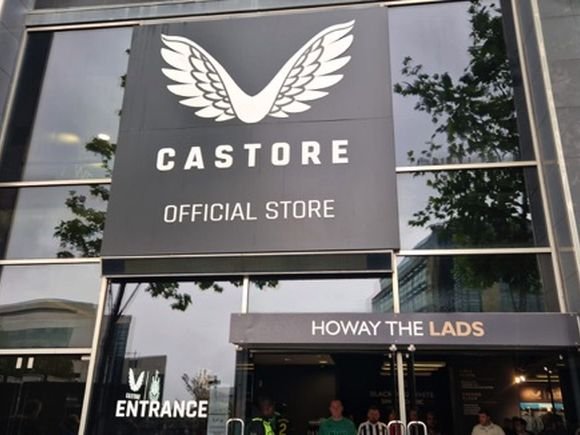

The club shop (usual opening hours Mon-Fri 9am-5.30pm, Sat 9am-5pm, Sun 11am-5pm, match nights 10am-10.30pm, match Sat 9am-6pm, match Sun 11am-5pm) is just below the Gallowgate Stand by Shearer’s bar.
For 2024-25, the home shirt features one thick black band running straight down against a white background, the outer stripes merging with the black sleeves. The second kit of navy and burgundy hoops honours the colours of the 1995-96 campaign, the nearest Newcastle have come to the title for almost a century.
Third choice is white with a black-and-green collar and green sleeves, offset by a form of the badge dating back to the 1980s. There’s more retro in the vintage shirt range, going all the way back to Wembley ’74.
Many of the accessories revolve around drinking, beer mats, coasters, shot glasses and bottle openers, with plenty of coffee mug options for the morning after.
Stadium tours
Explore the ground inside and out

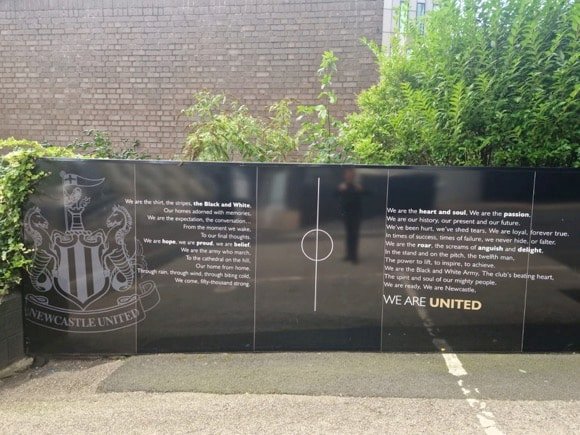

Stadium tours (£20, seniors £16, juniors £11; Mon-Fri 12.30pm & 2.30pm, Sat-Sun hourly 10.30am-2.30pm, not match days) are guided with great humour and affection for the club.
Audio effects and visual displays help them bring the club’s heritage to life. Visitors are taken to the home dressing room, the media centre and down the players’ tunnel, as well as to a lofty vantage point in St James’ Park for a Magpie’s view of the stadium.
This is also the attraction of the Rooftop Tours (£25, seniors £22; Sat-Sun 10am, noon & 2pm, not match days) for over-16s, for which a helmet, high-vis jacket and binoculars are provided. The club should be commended for laying on Autism-friendly tours (over-16s £15, under-15s £6, accompany adult free) on a monthly basis.
Contact stadium.tours@nufc.co.uk for booking and further information.
In all cases, visitors should arrive at the stadium tour reception office under the Milburn Stand 15mins before their set time.
Where to Drink
Pre-match beers for fans and casual visitors

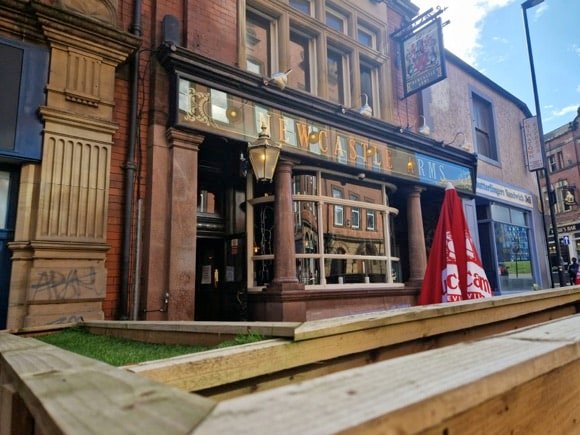
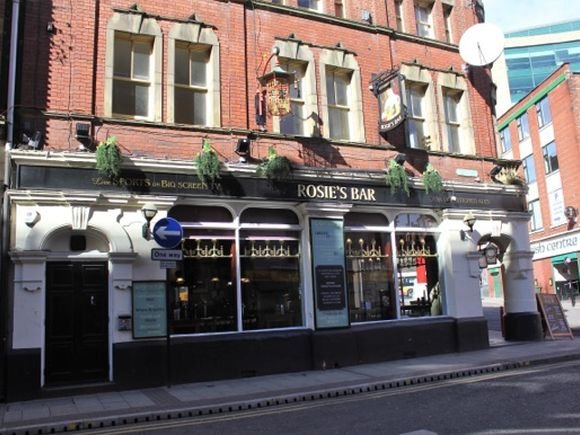
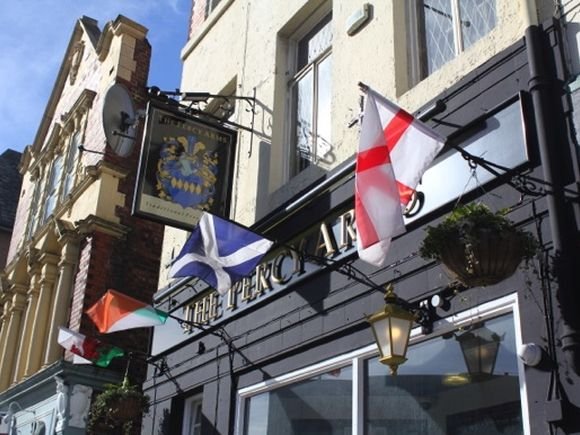
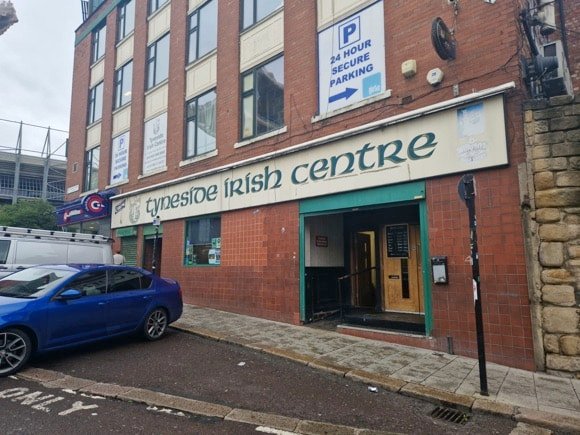
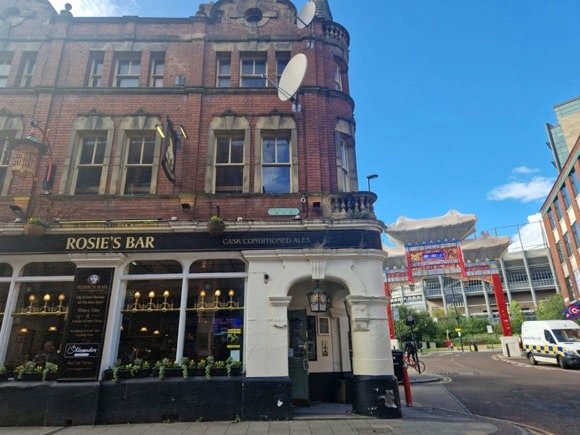
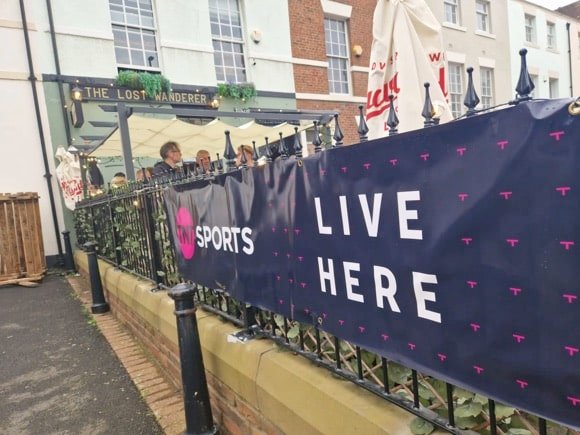
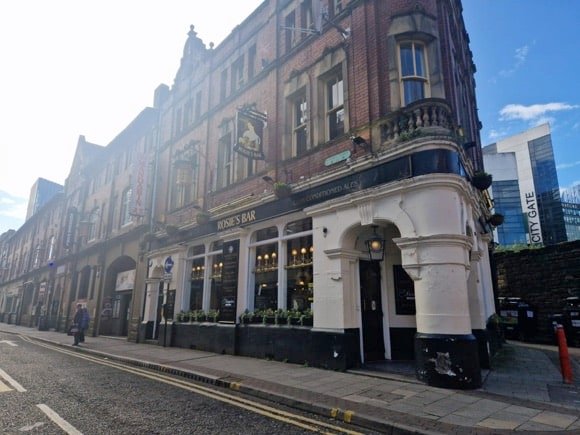
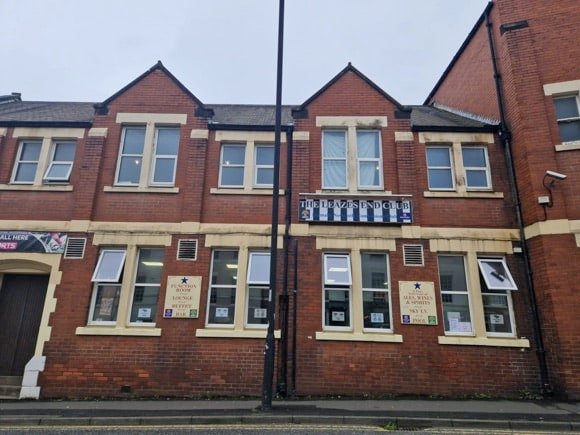
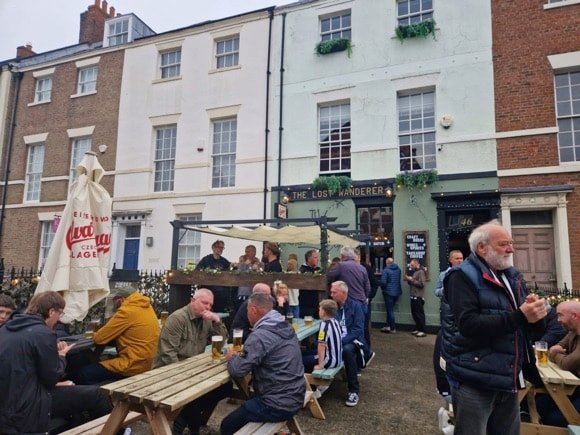
The ground’s proximity to the city centre means that pubs are plentiful. The Newcastle Arms (57 St Andrew’s Street), Three Bulls Heads (57 Percy Street), the Percy Arms (Percy Street) and Rosies Bar (2 Stowell Street) are traditional gathering points on and off main streets leading up from town.
Also just behind Gallowgate, the Tyneside Irish Centre can be a friendly spot to pop into, provided you’re not wearing team colours, while for something a little more alternative, with early-opening, The Lost Wanderer on Leazes Park Road combines classic café with match-day bar and music venue. Quality jukebox, too.
On the same street, open weekends and for NUFC fans on match days, the Leazes End & Companions Club offers regulars a home from home and a pool table.
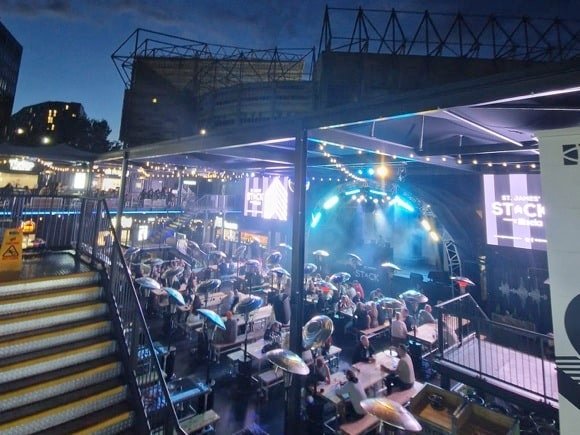

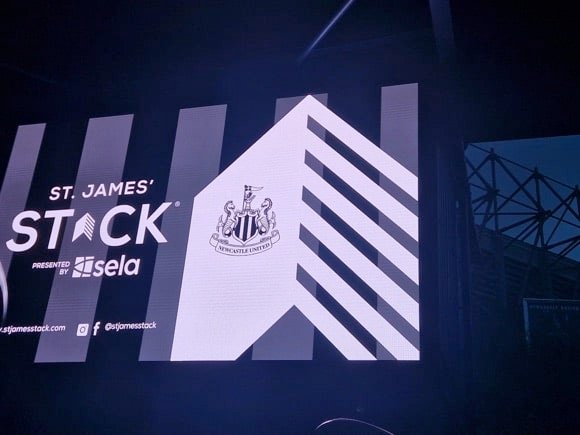


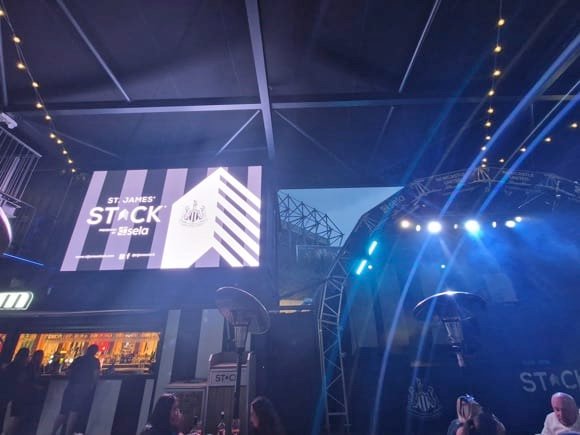

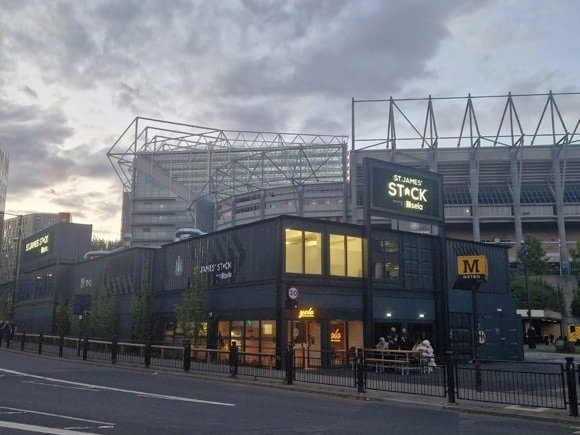




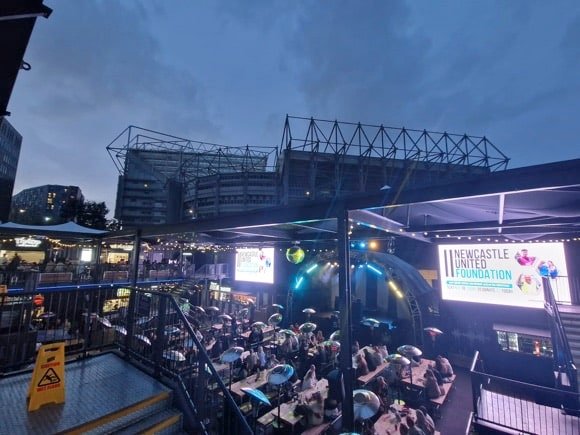
Also popular, nearer the ground and attracting a younger clientele, is jukebox-blessed Trent House (1-2 Leazes Lane), the first place to sell local cult comic Viz. Souvenir T-shirts carry the blue star of Newcastle, each point representing one of the city’s five founding breweries.
A new addition for 2024-25 is STACK, a lively food court and bar hub right by St James’ Park on Gallowgate, open all week but admitting home fans only on match days when DJs and live music entertain the masses.
Among the drinking outlets, you’ll find the Toon Kit Room, done out in NUFC shirts down the ages, Wor Bar, whose speciality is, surprisingly, cocktails, and Anthems, which gets the classic chants going of a match day.
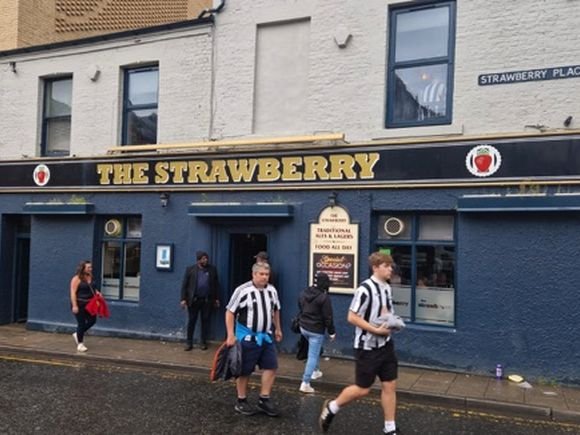
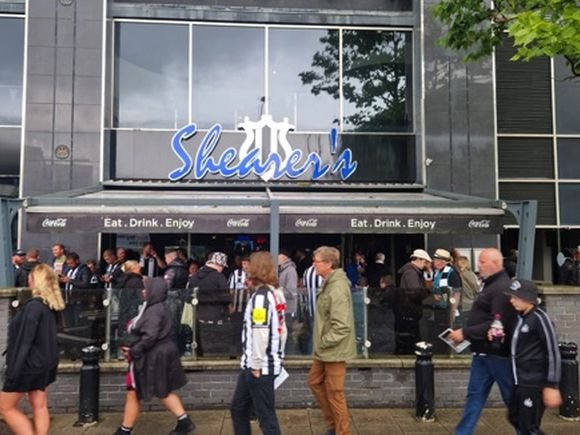
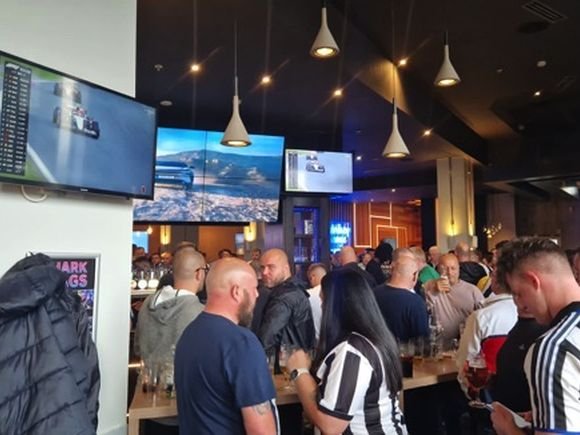
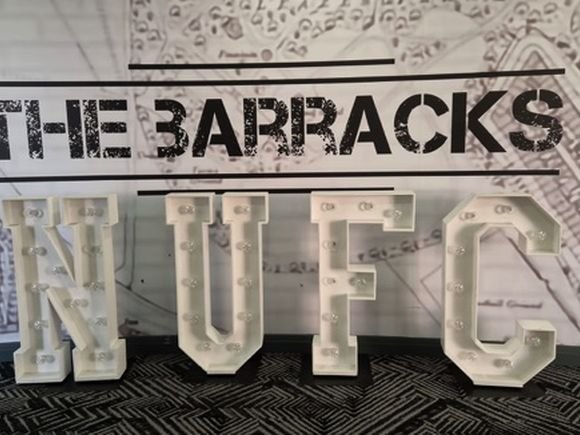
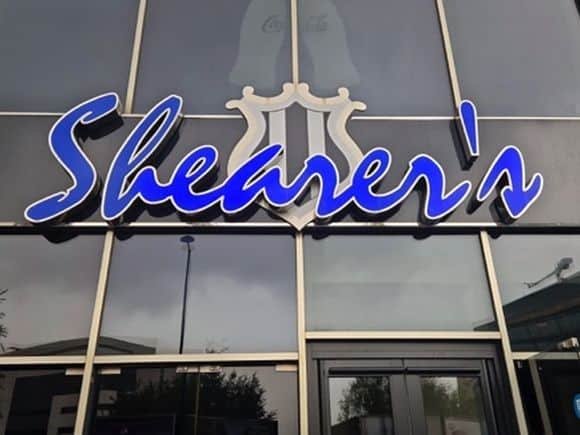
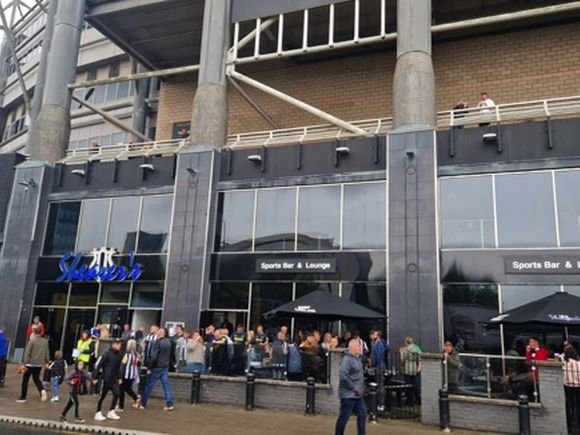
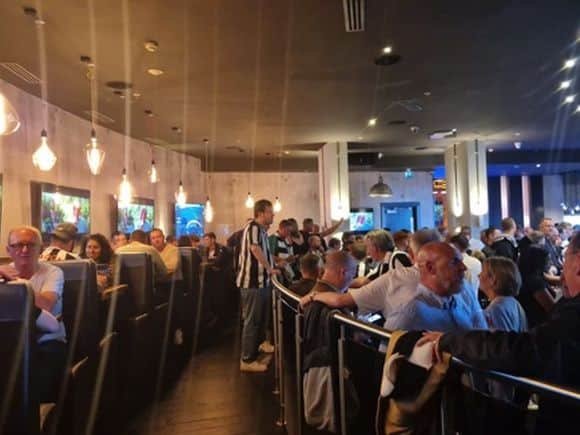
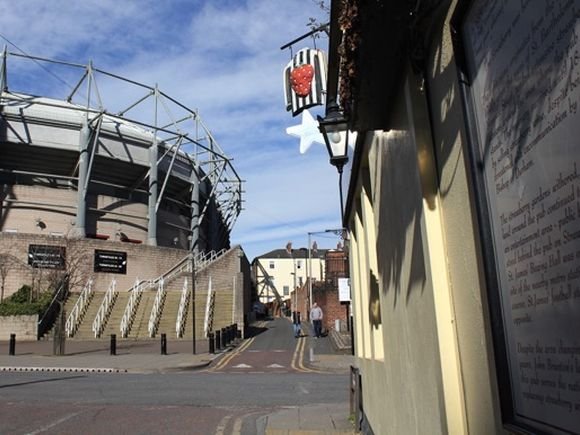
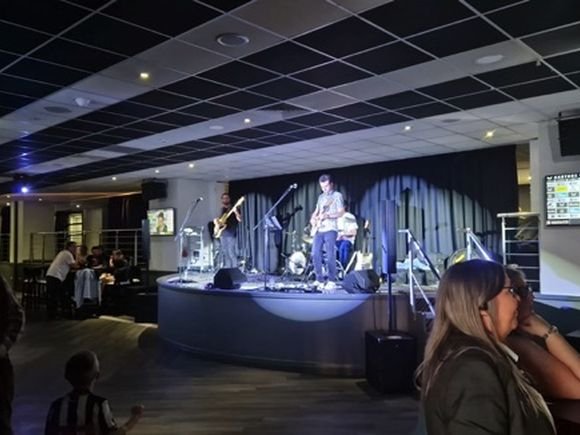
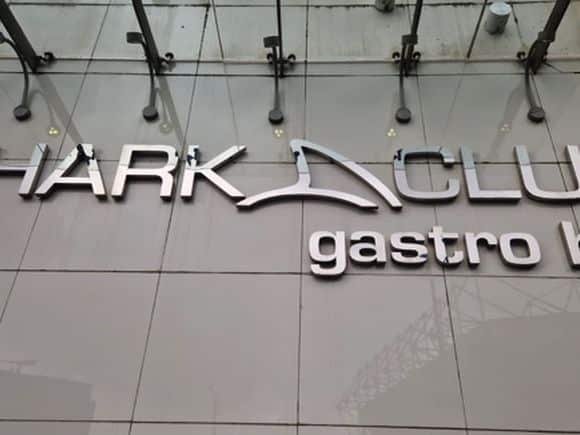

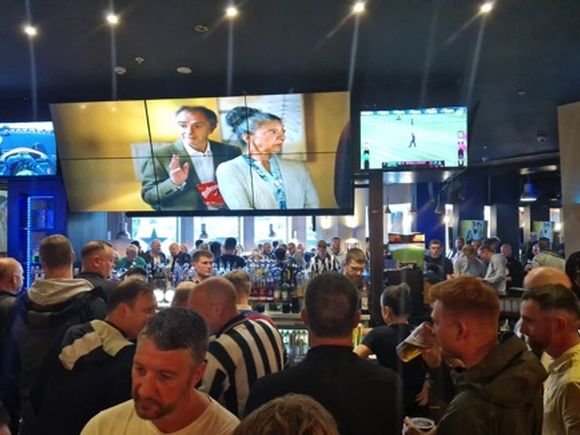
For all that, the place to be before and after any game is the The Strawberry, directly opposite the stadium. With a pictorial montage to NUFC through the ages, this pulsing boozer lives, eats and drinks black and white. It’s even better sampled in quiet reflection on non-matchdays when you can take in the history without the hordes.
The Shark Club Bar at the nearby Sandman Signature Hotel also takes much pre- and post-match custom, particularly for away fans.
At St James’, Shearer’s bar (Mon-Thur 10am-11pm, Fri-Sat 10am-midnight, Sun 11am-8pm) at the Gallowgate End welcomes home and away fan alike. As well as match action on more than 50 screens, it does a live feed on match days. A full menu includes all-day breakfasts. Private booths are available, as well as an upstairs suite which hosts match-day packages.
The other hospitality area with an up-for-it atmosphere pre- and post-match is the Barracks in the Milburn Stand, where live music is laid on after the final whistle.








